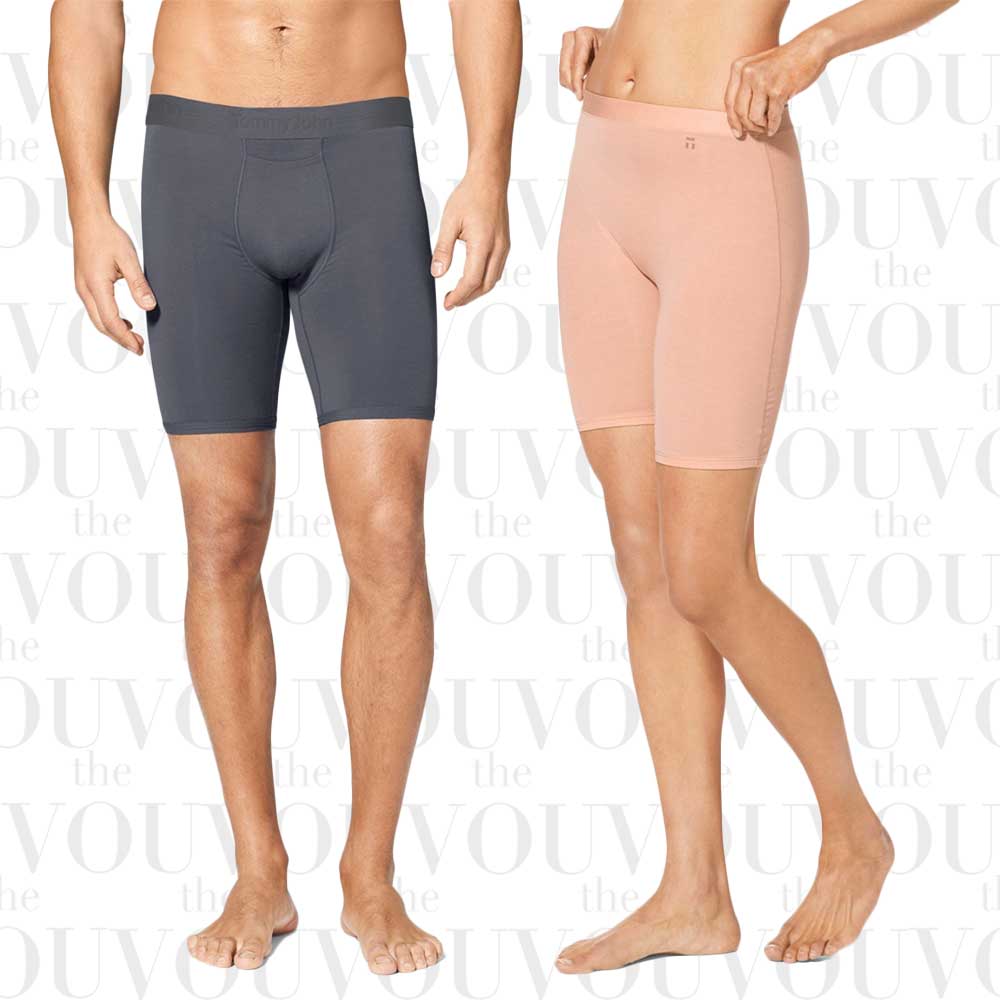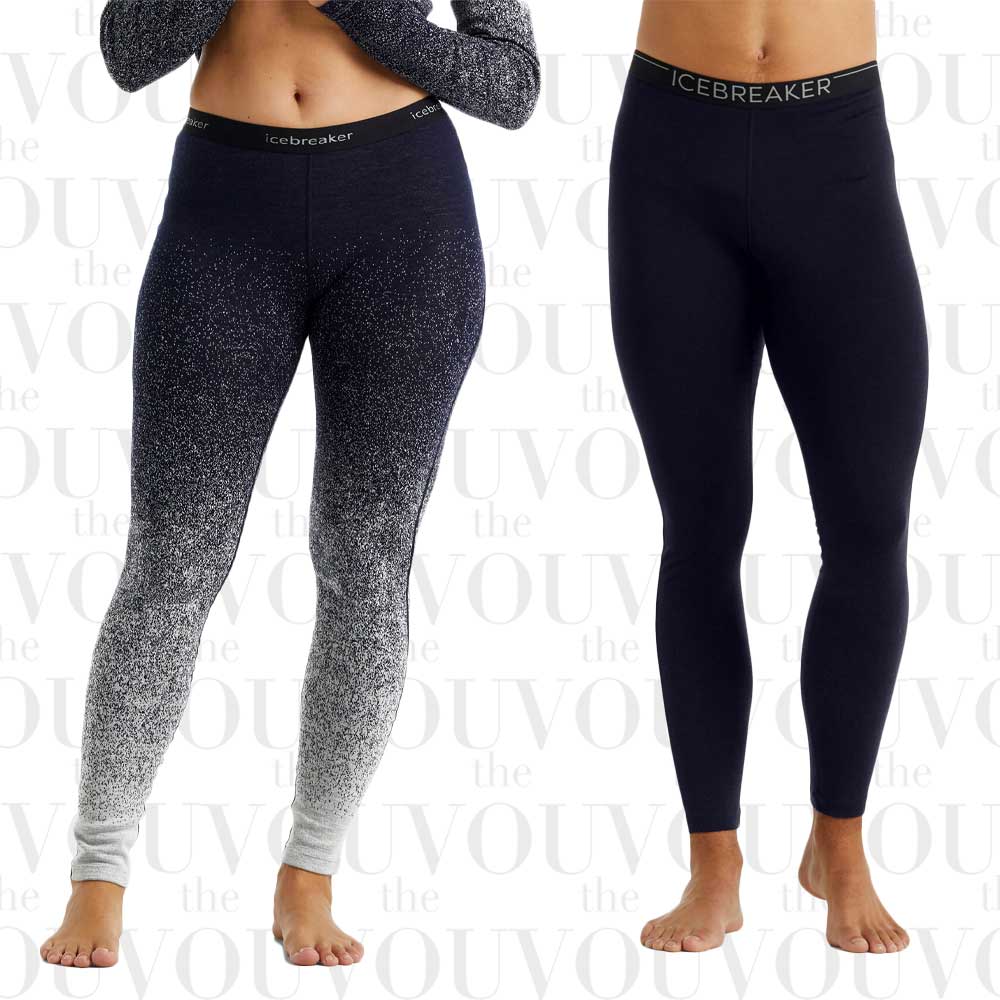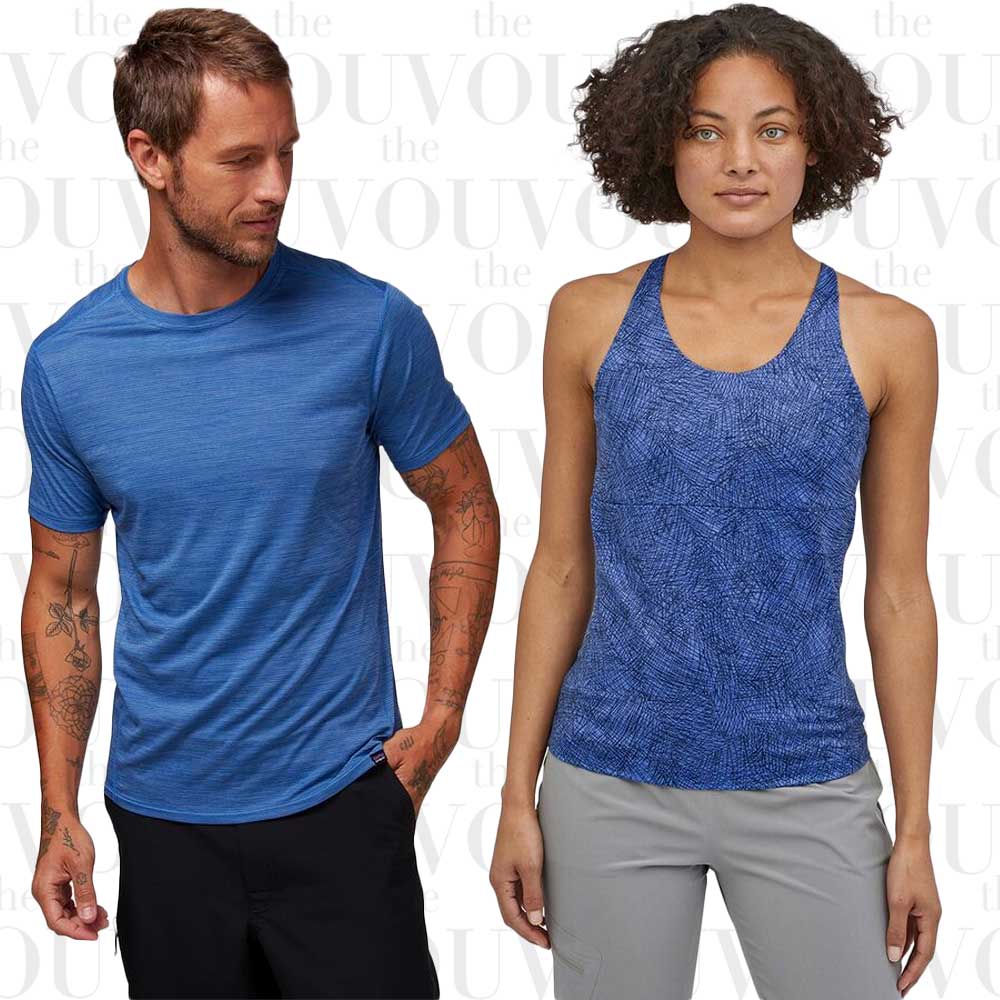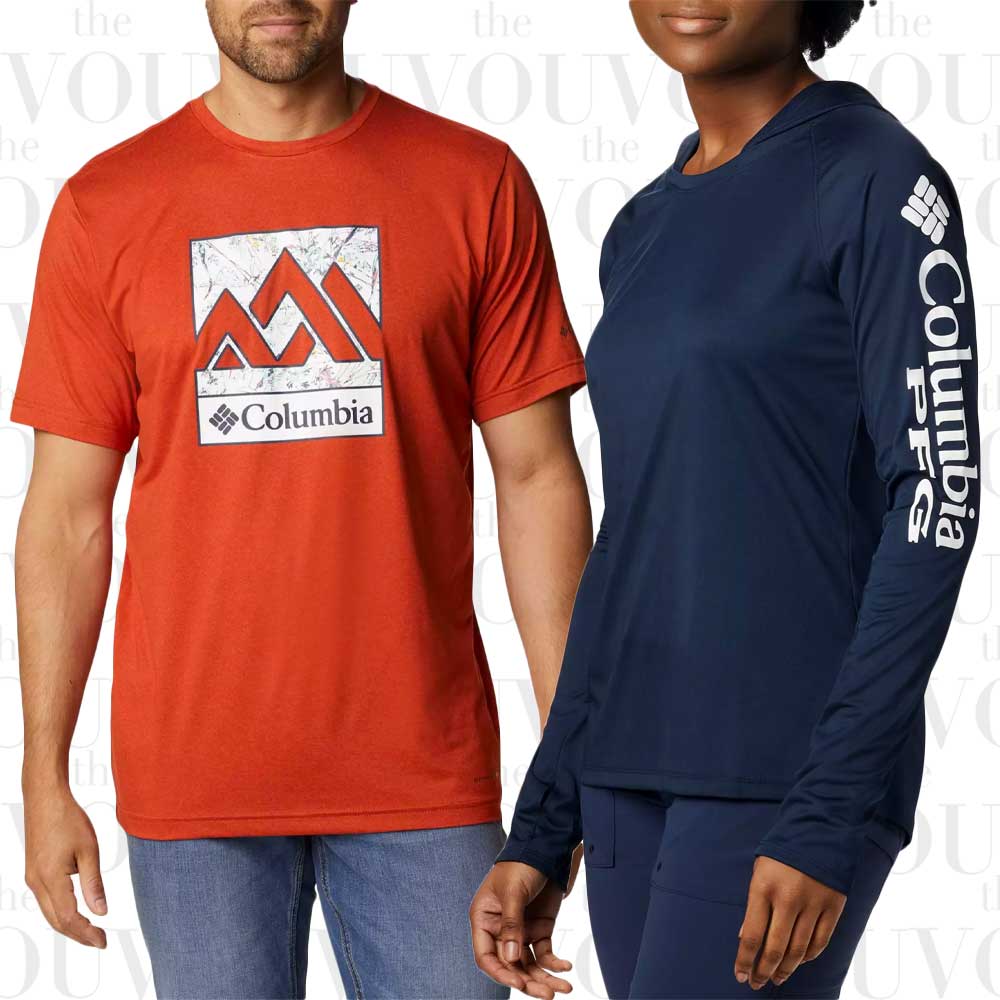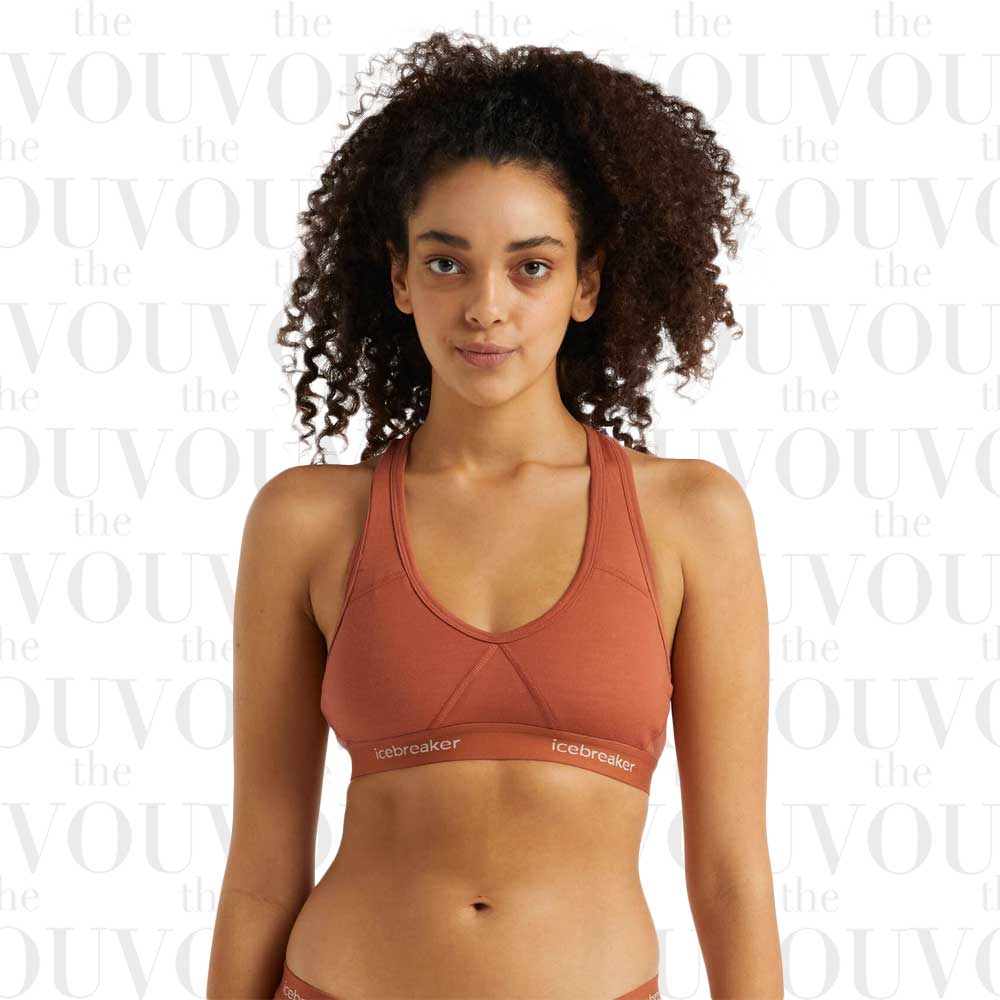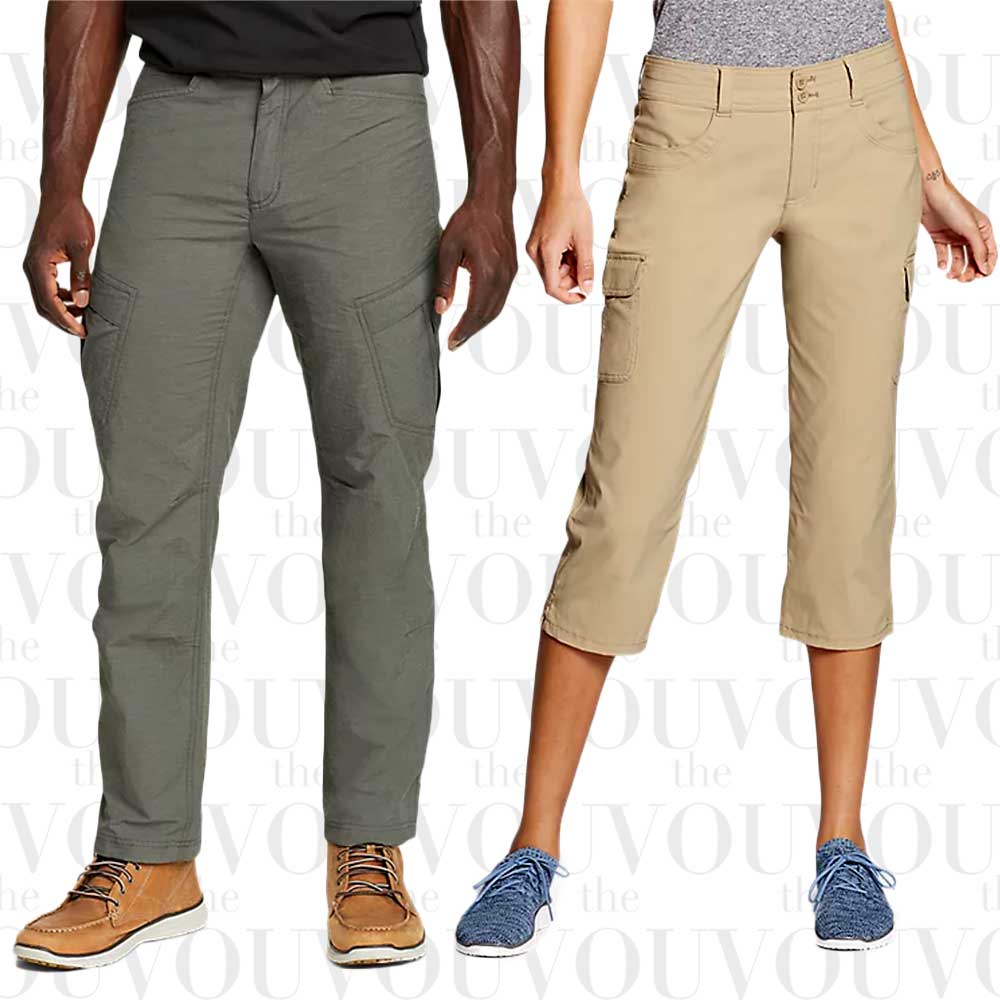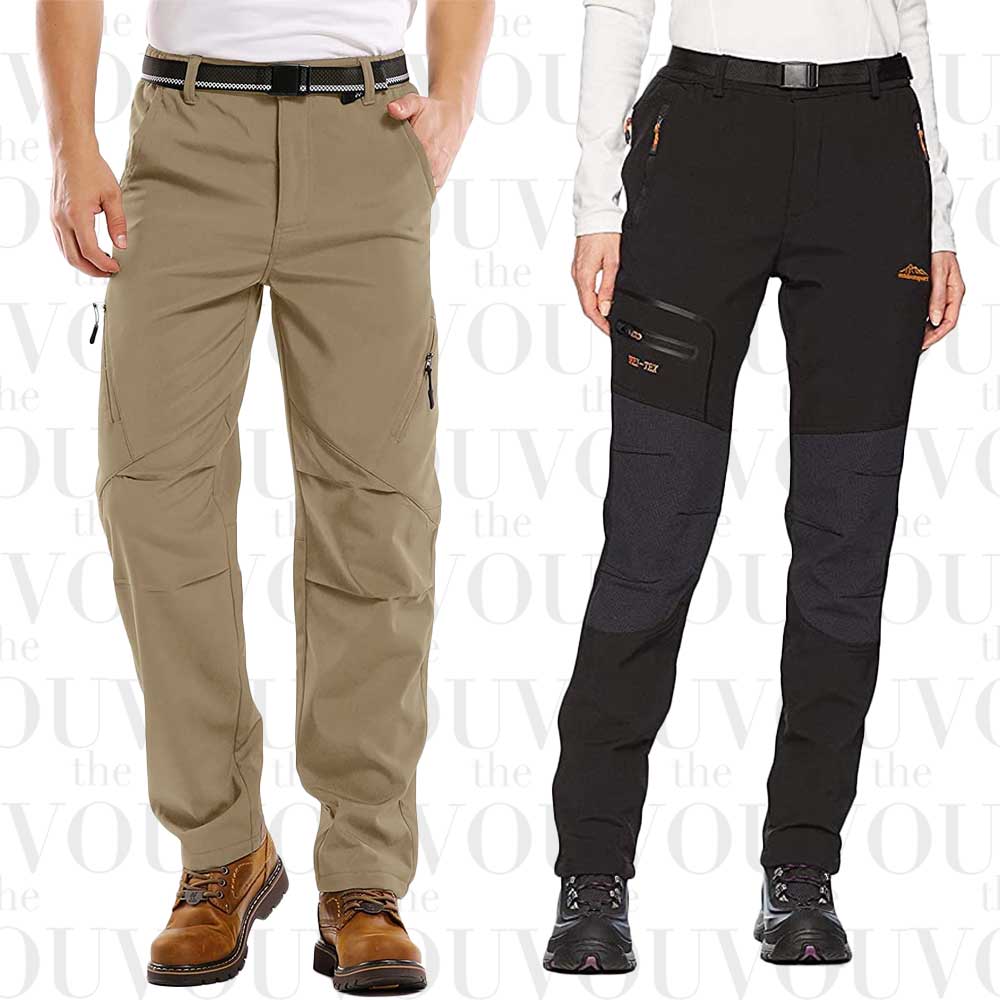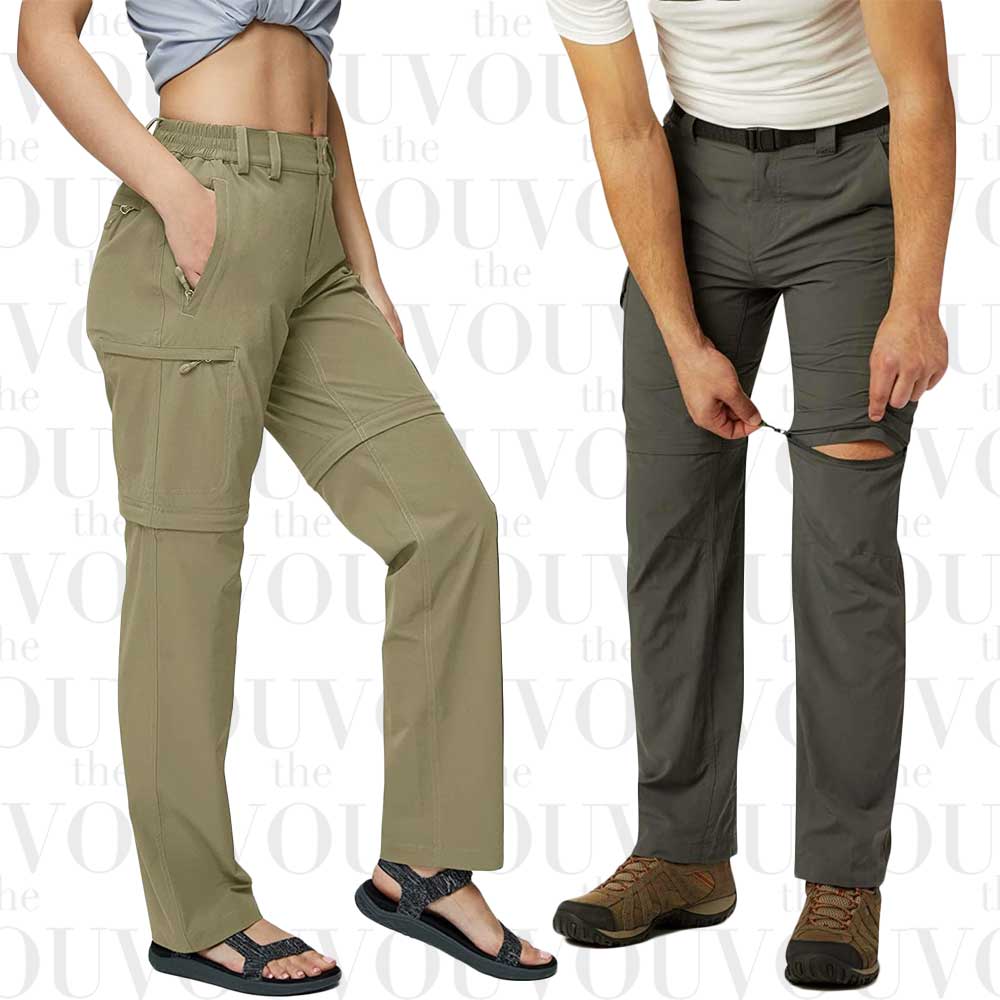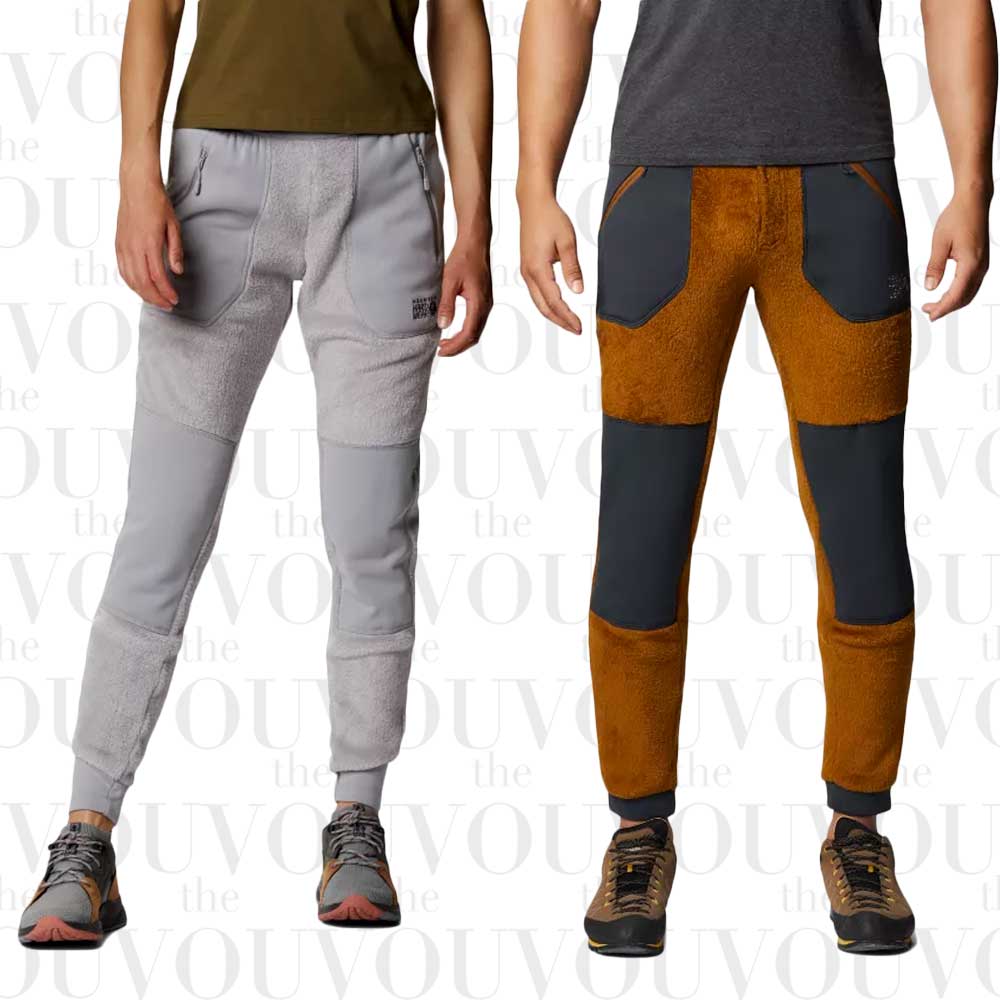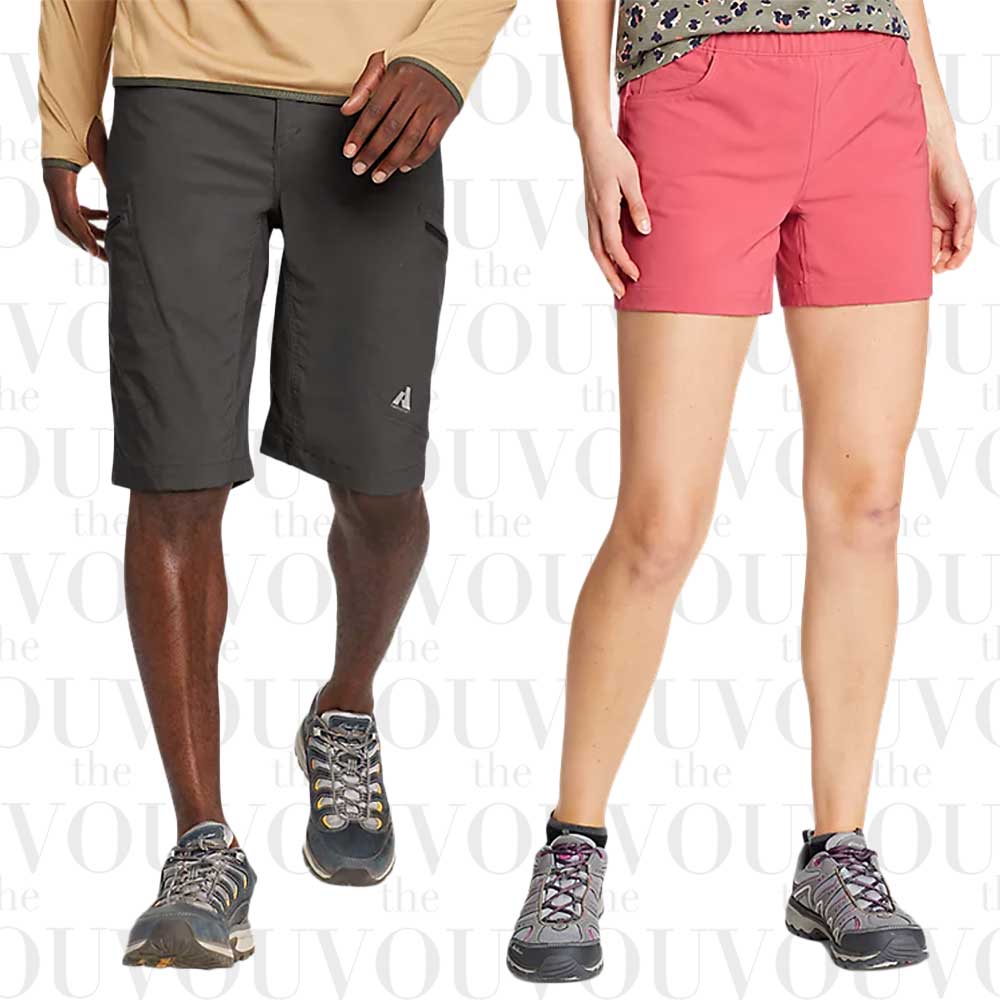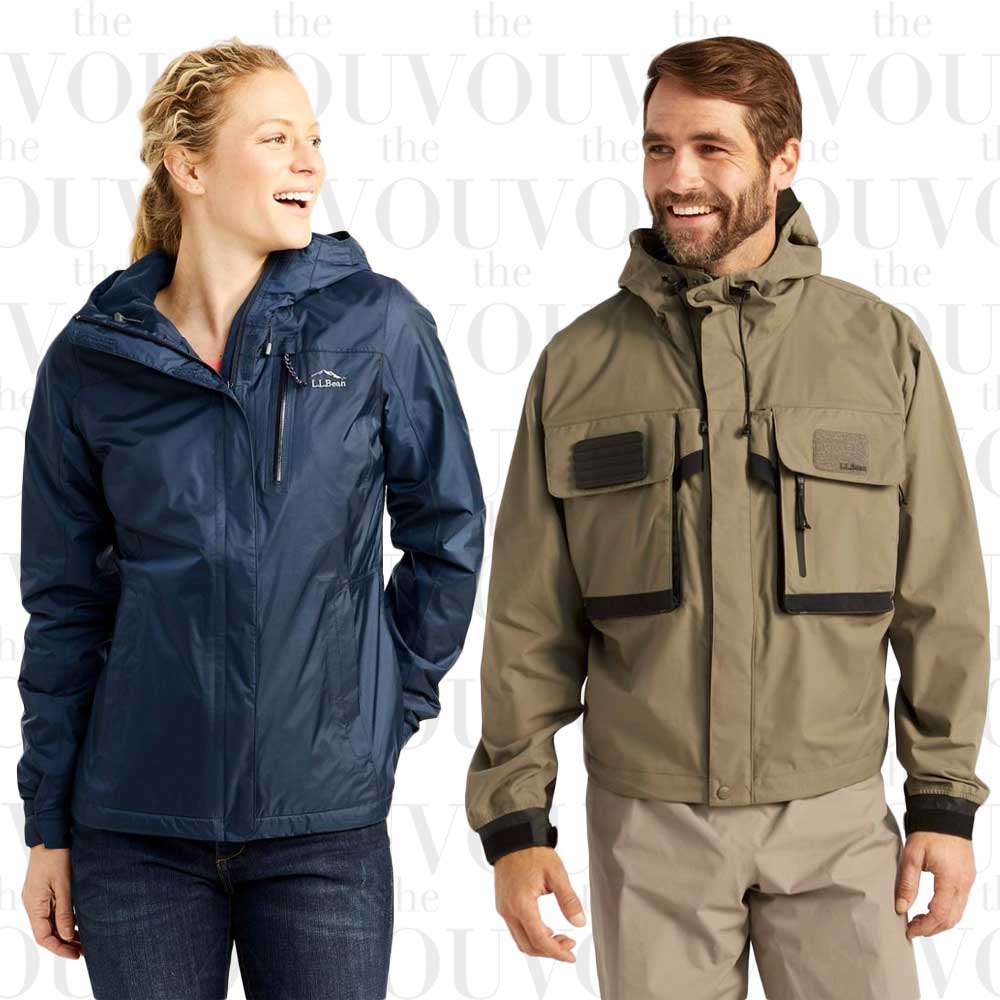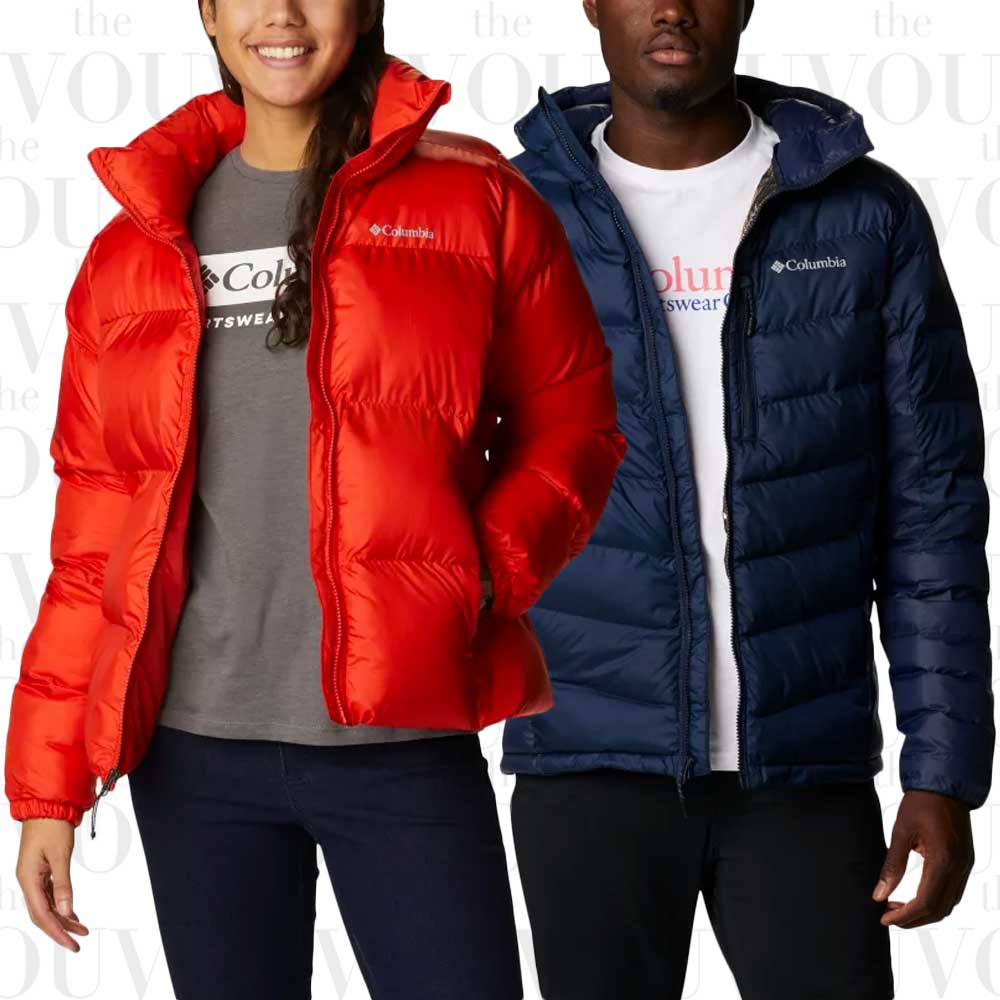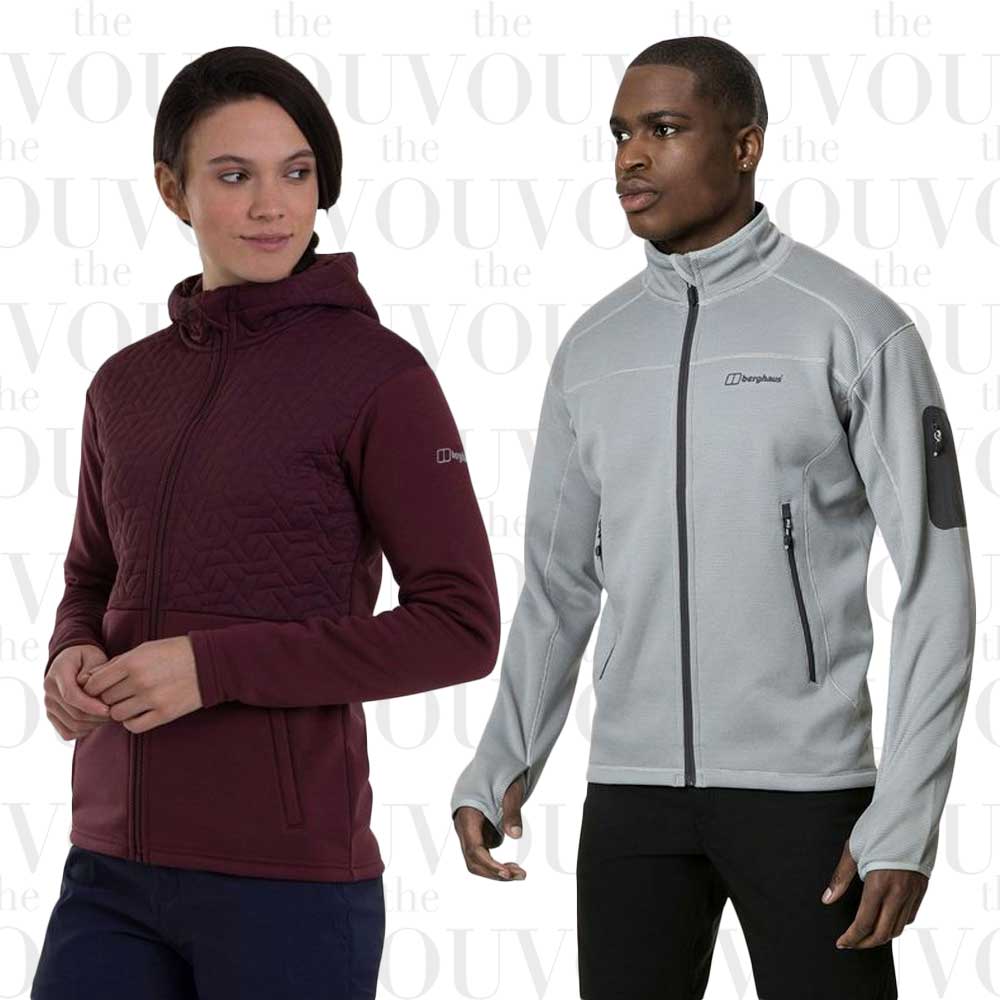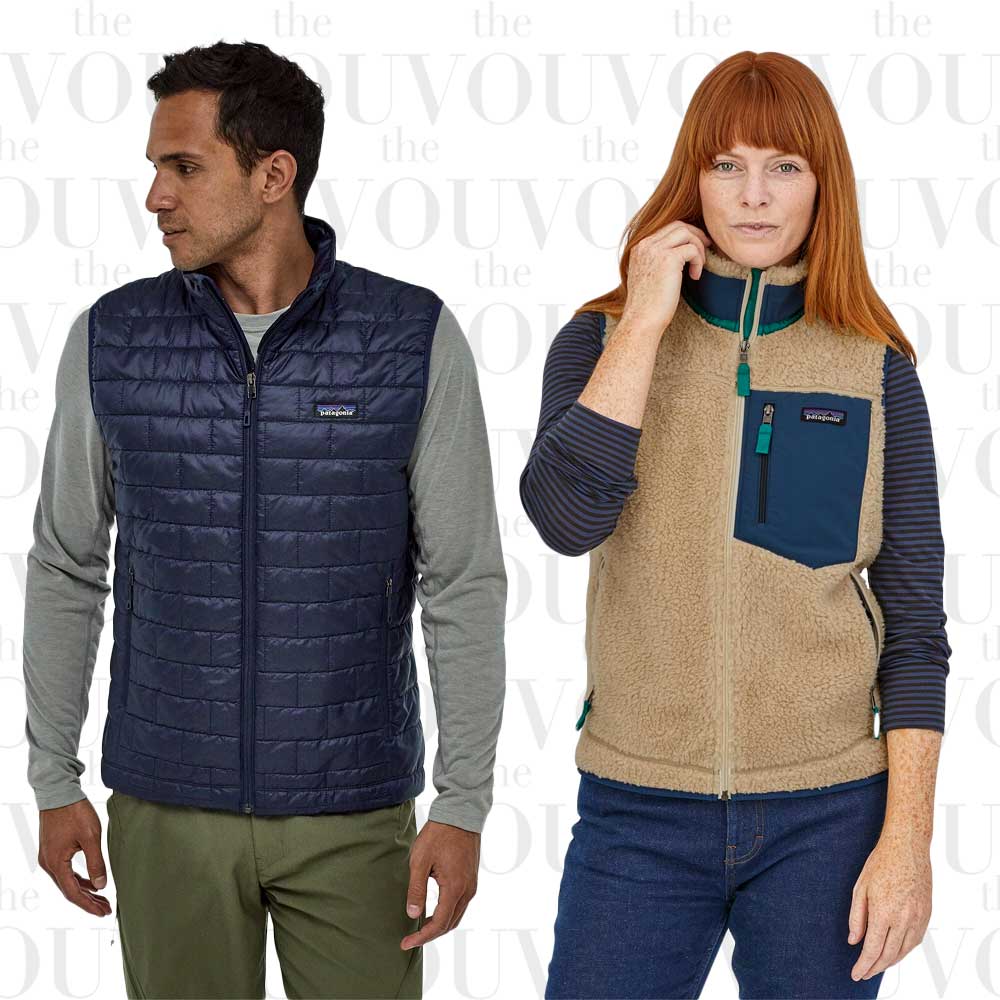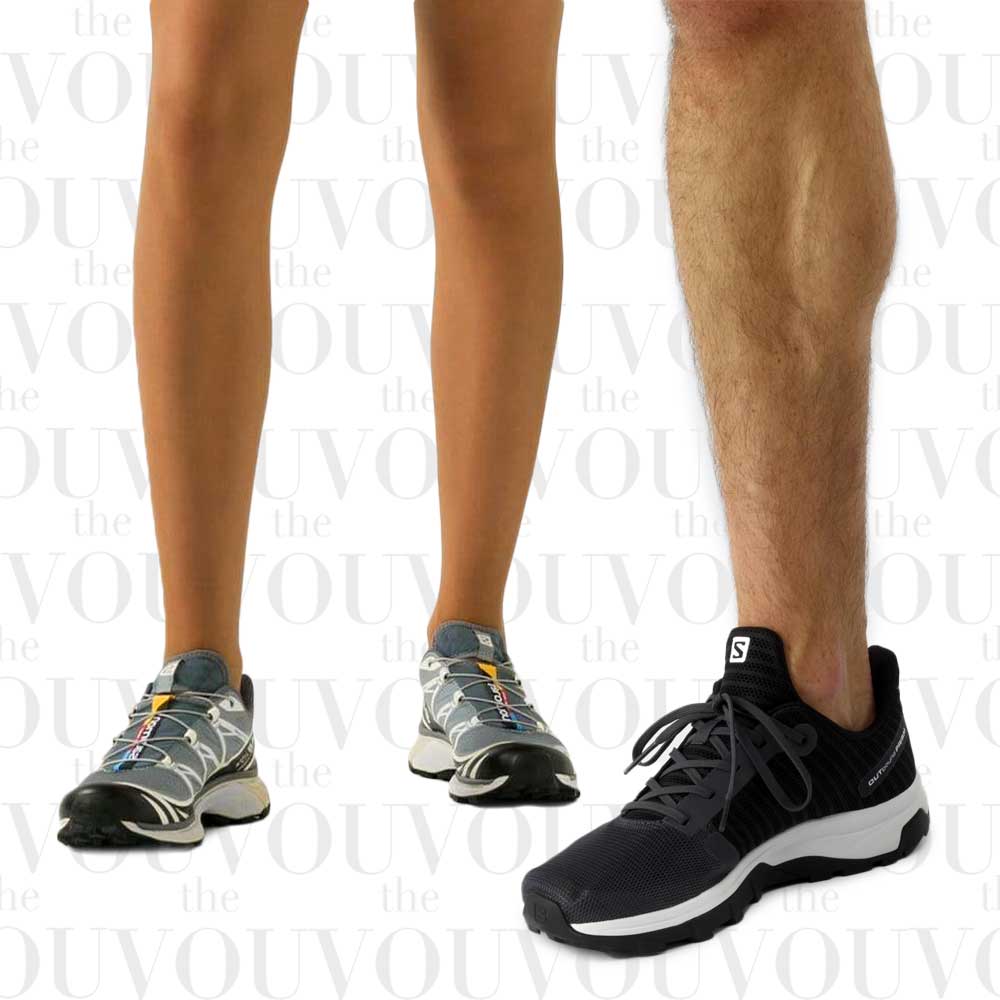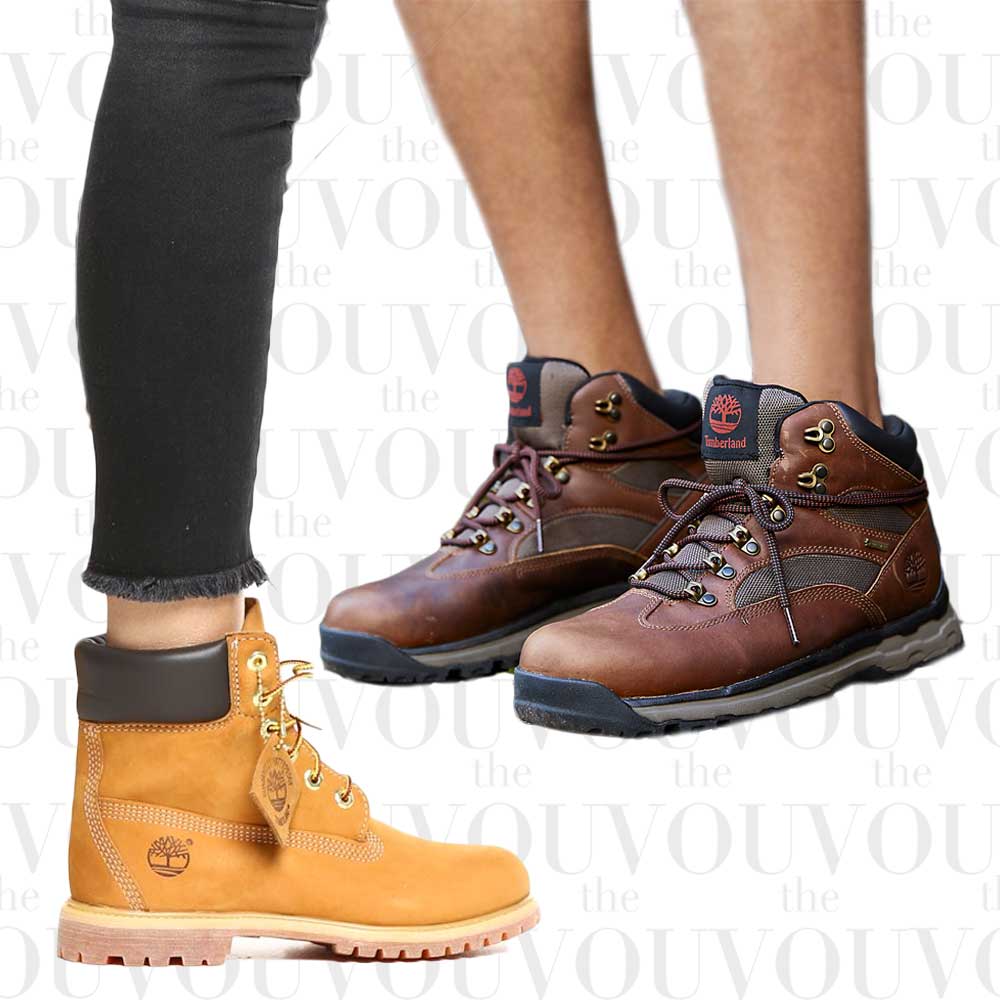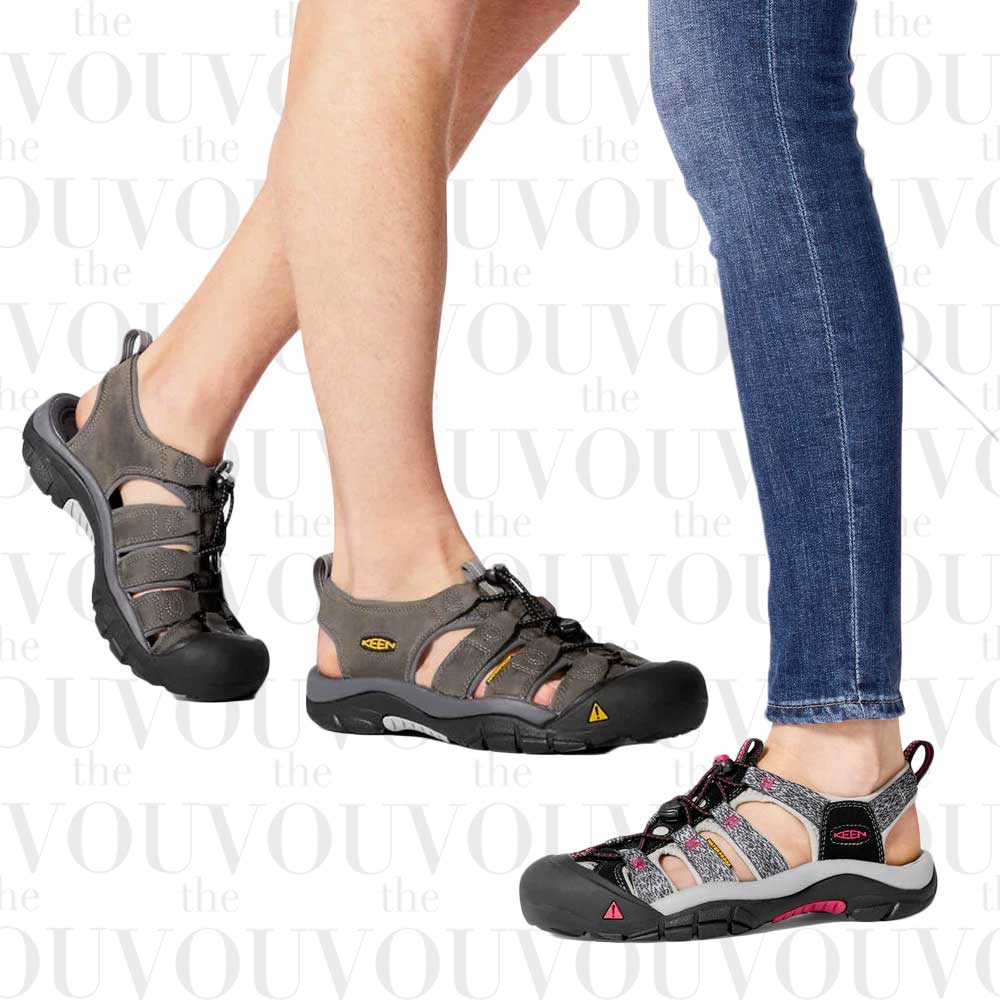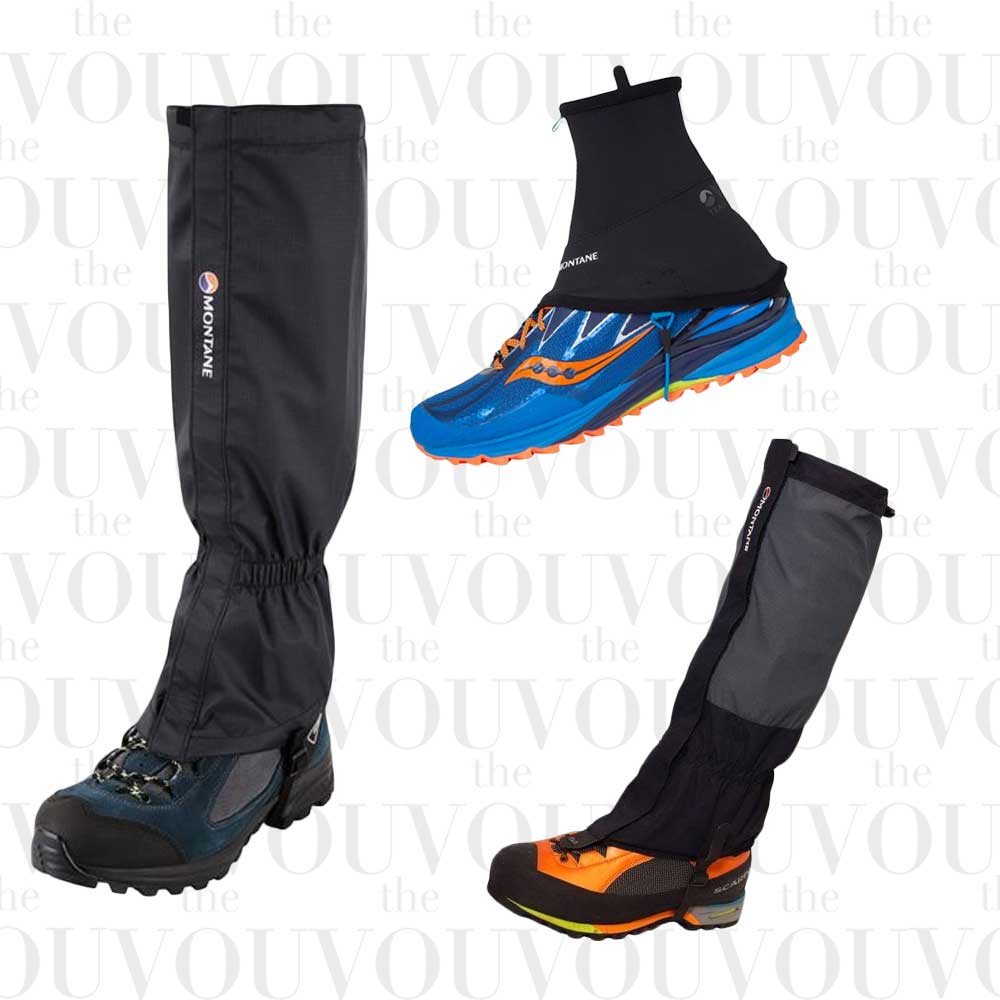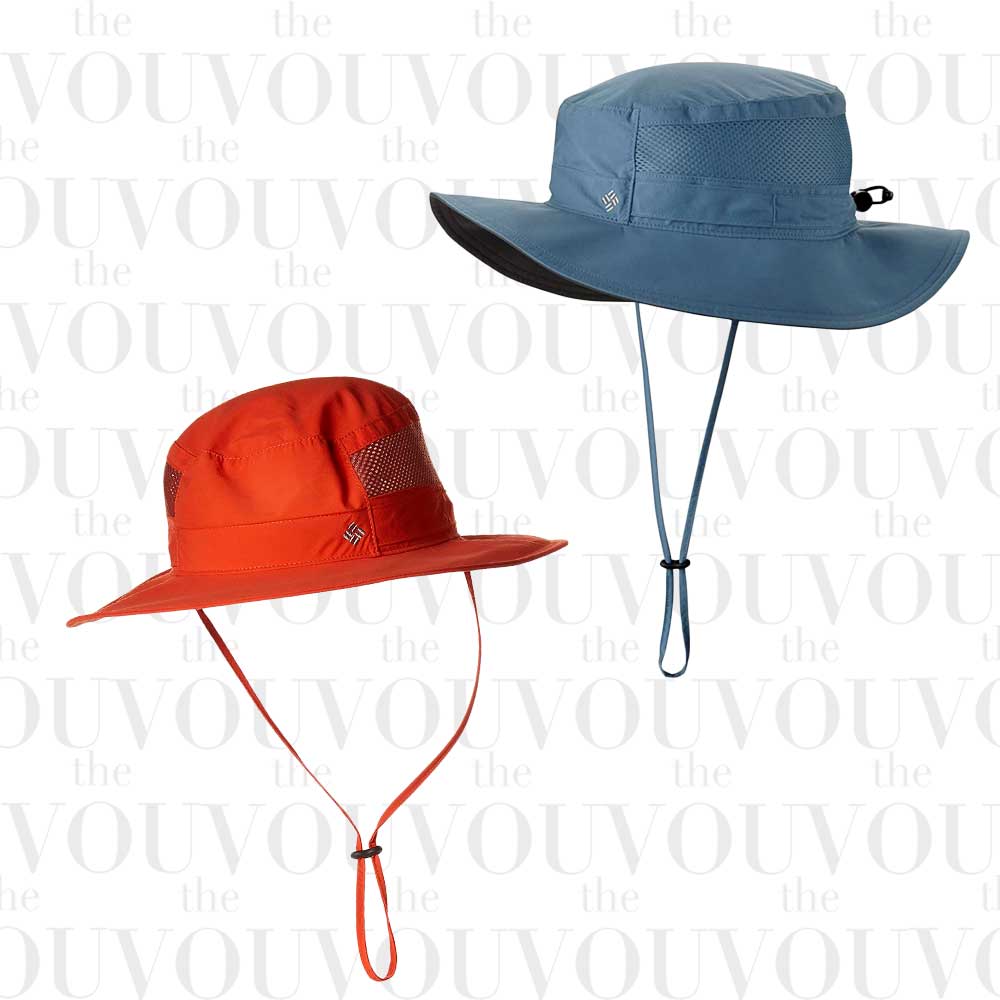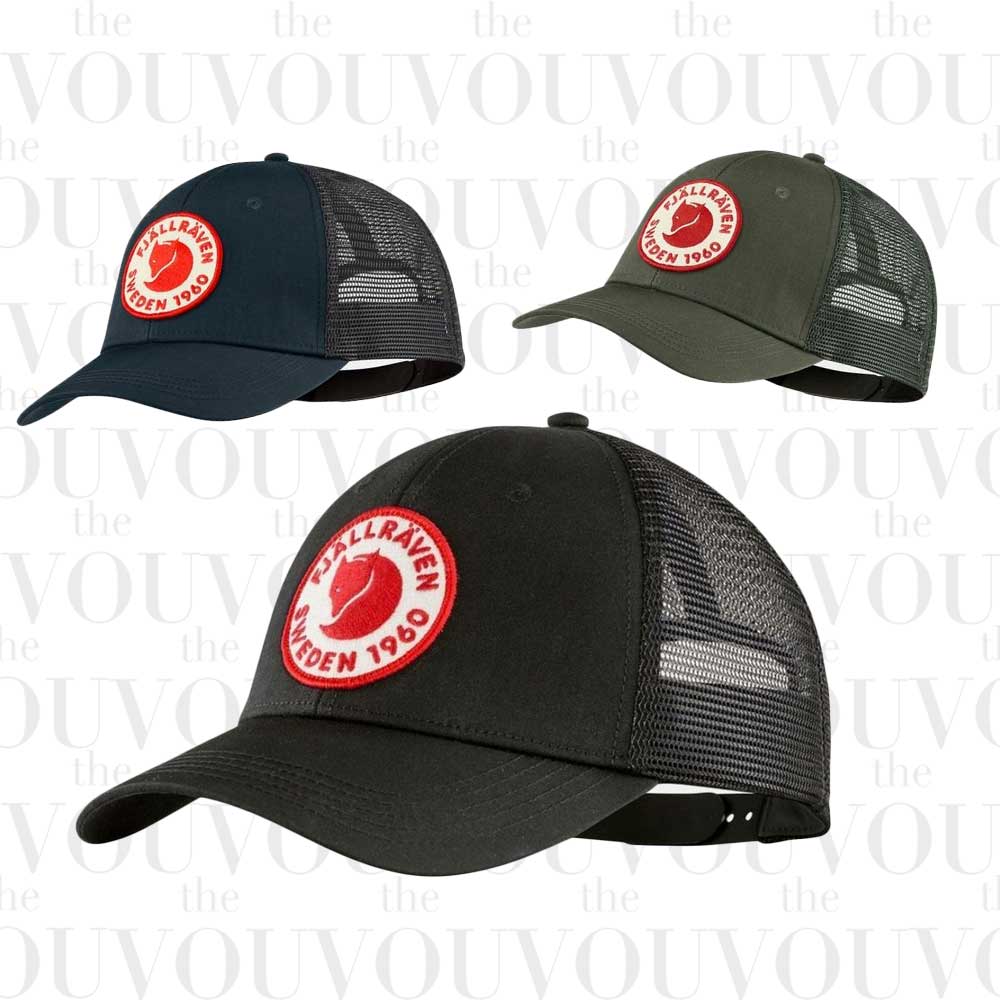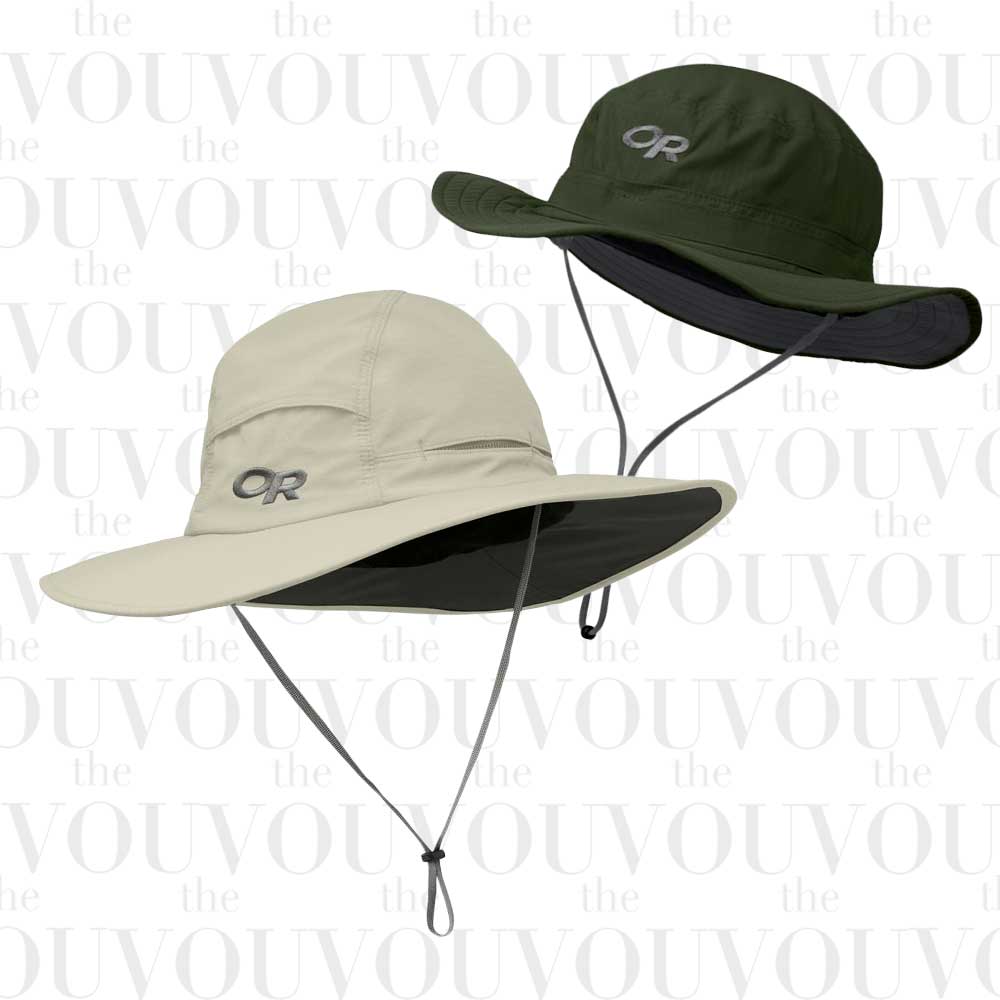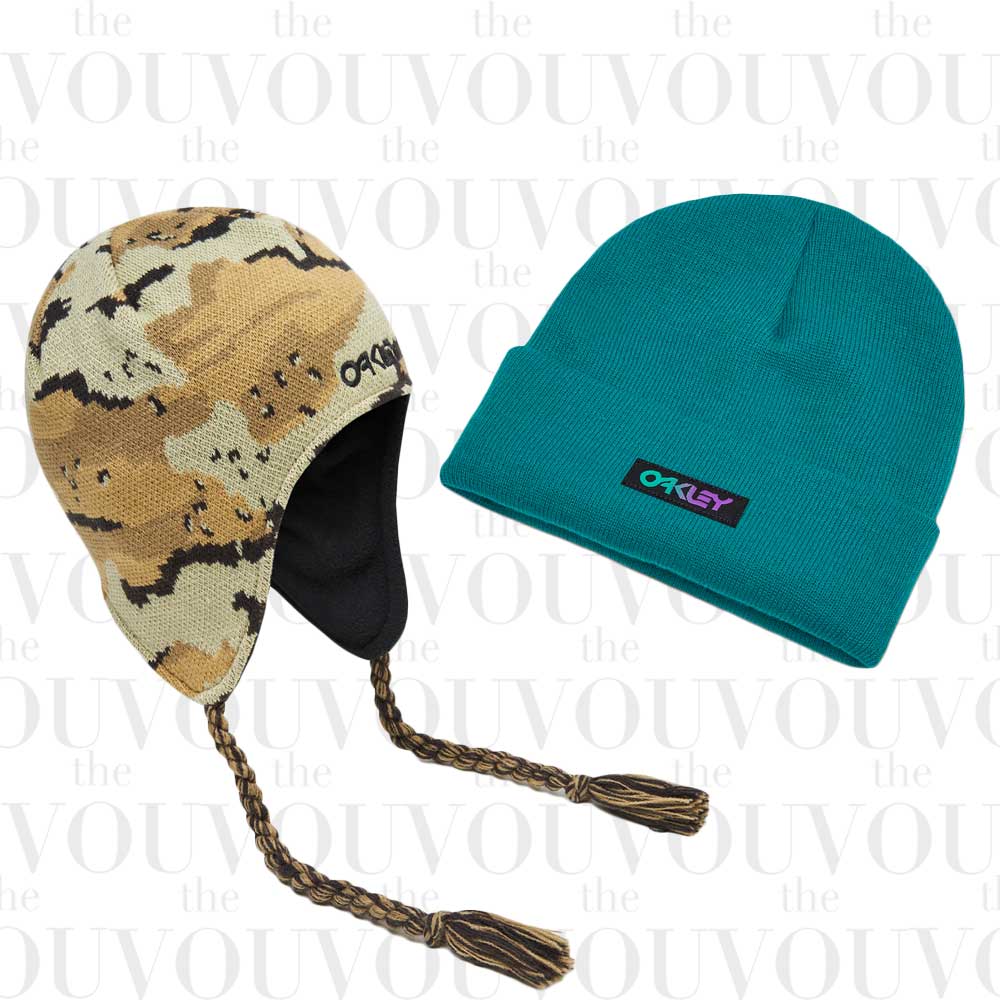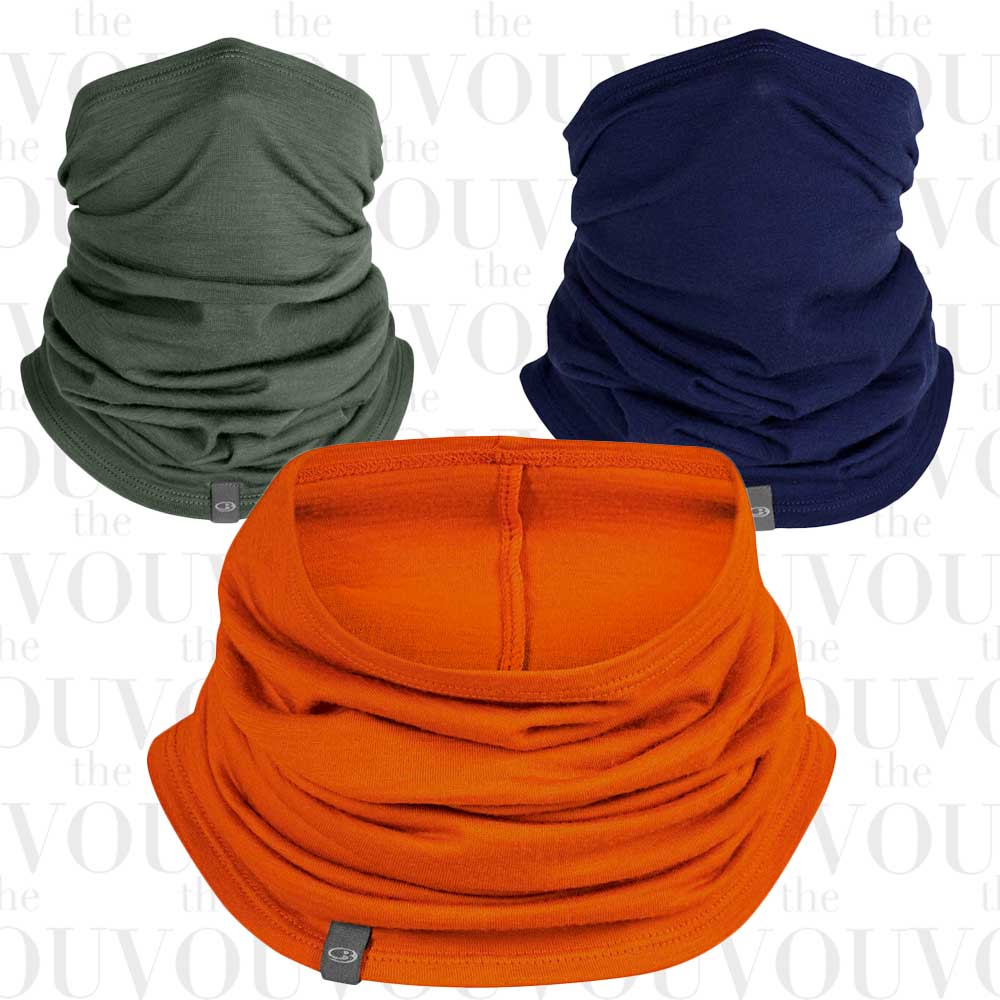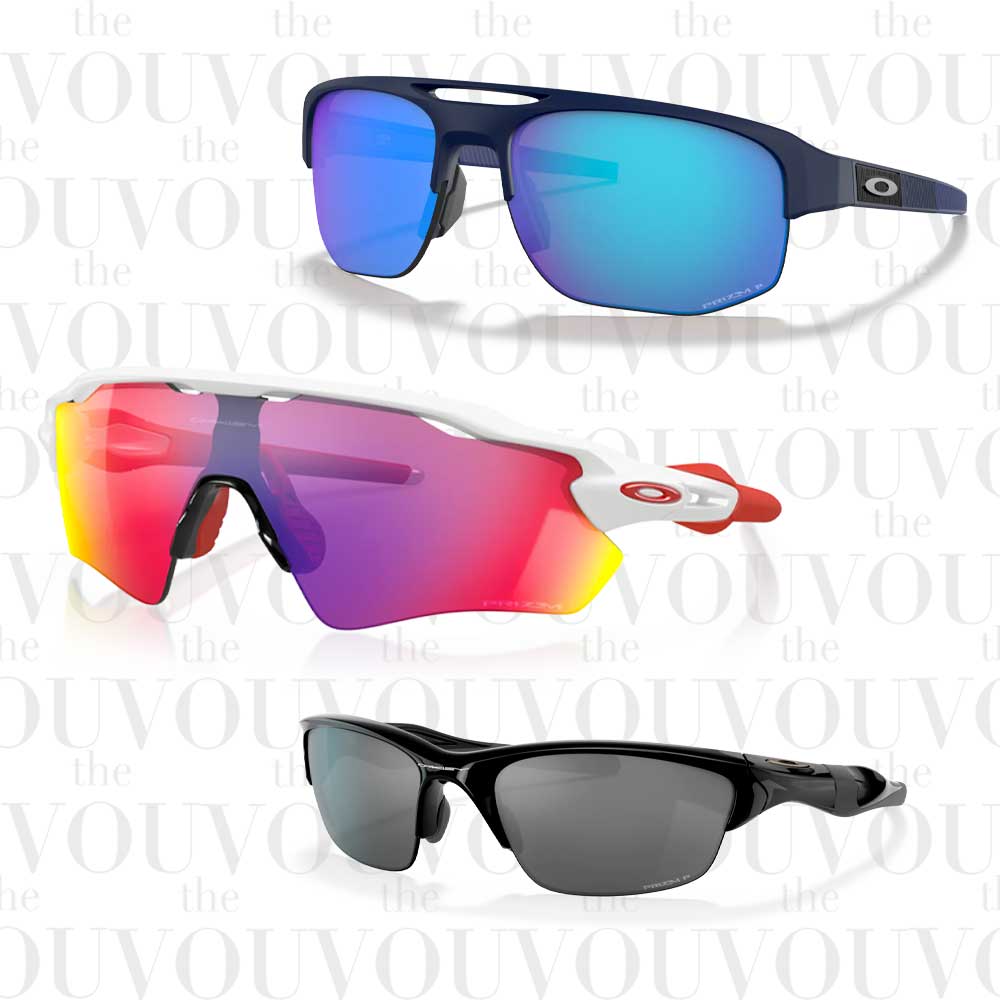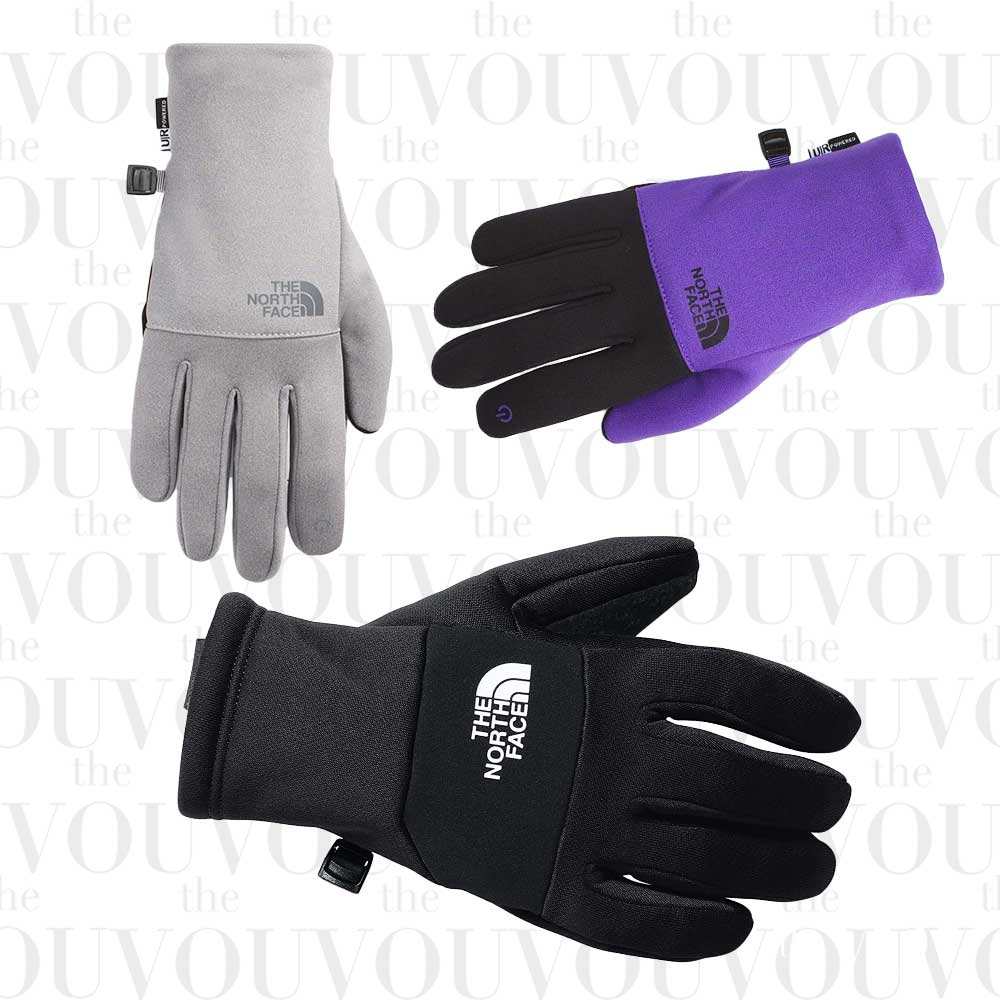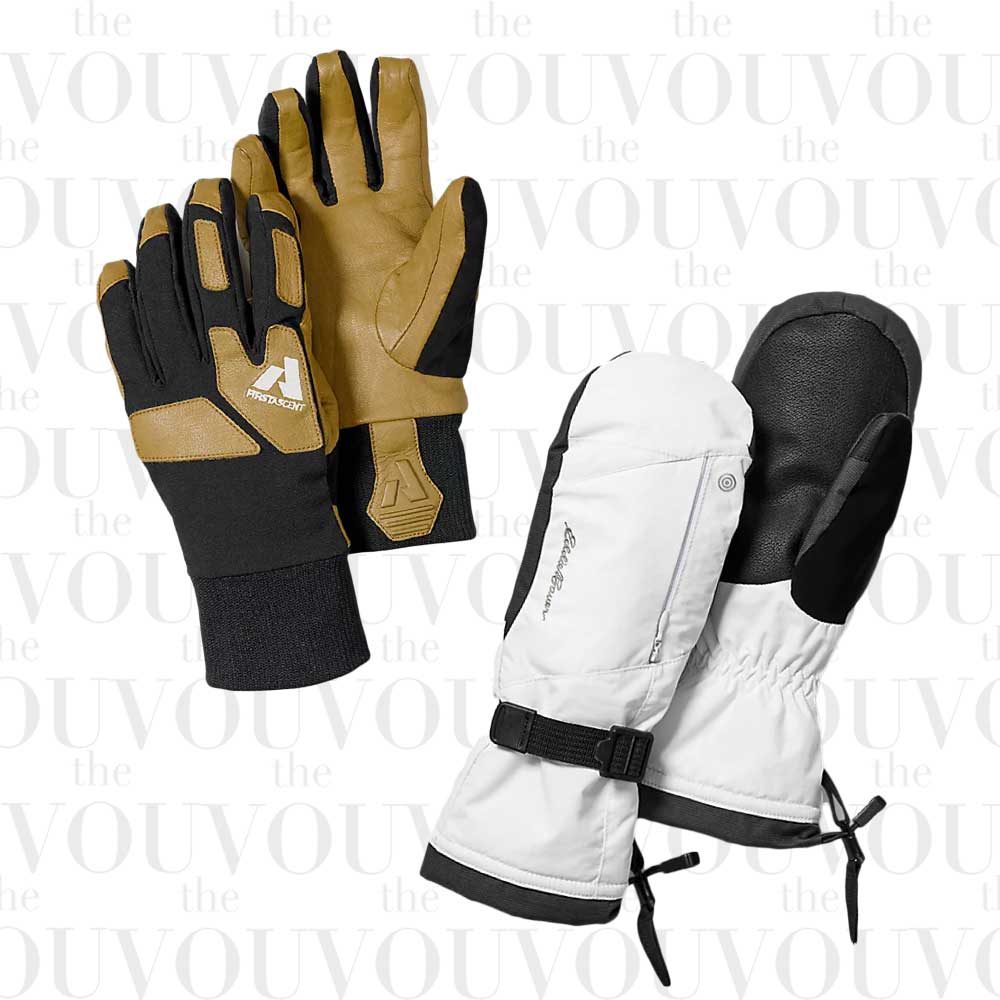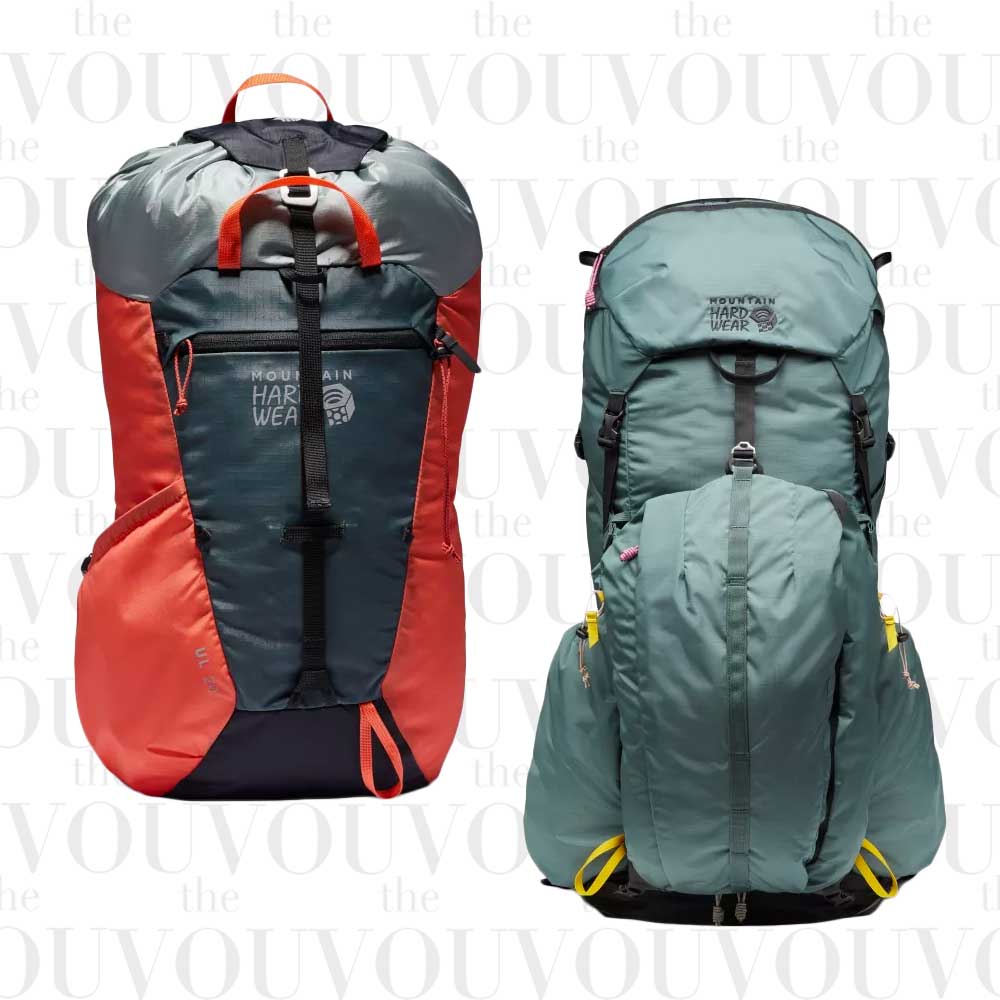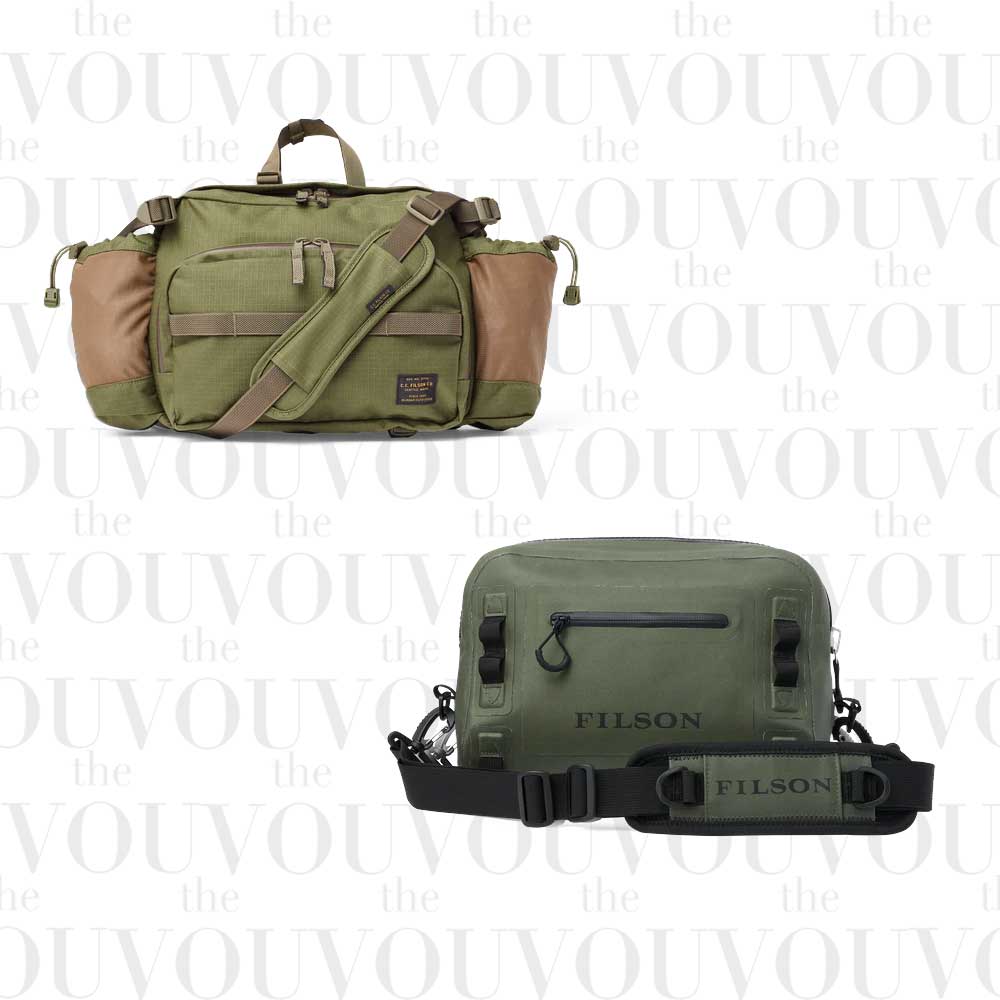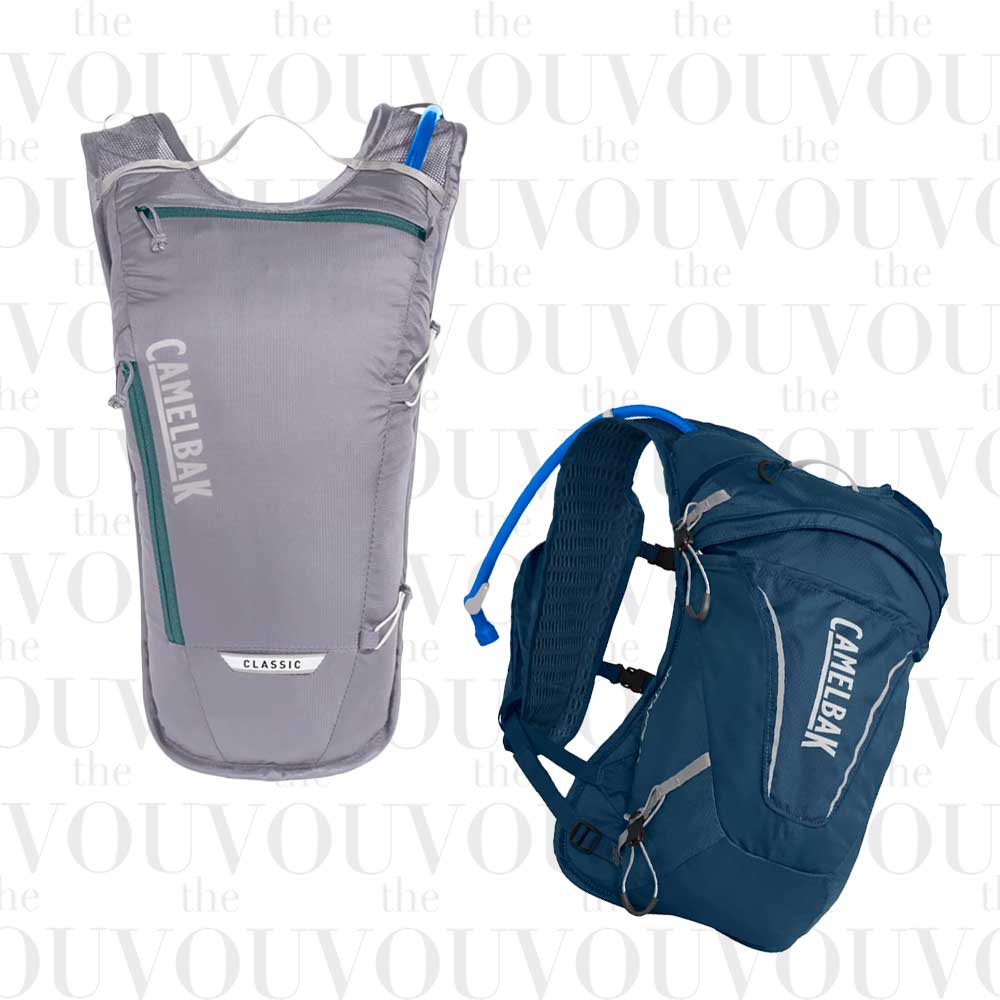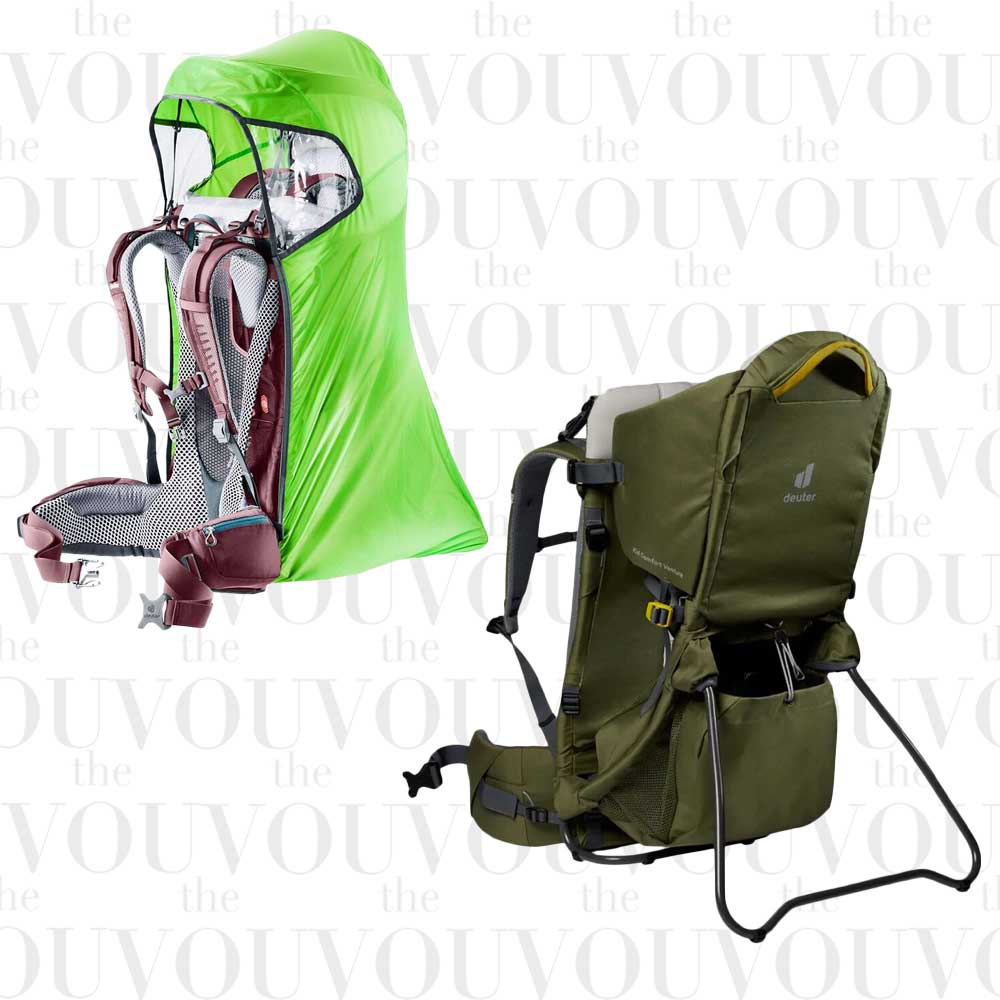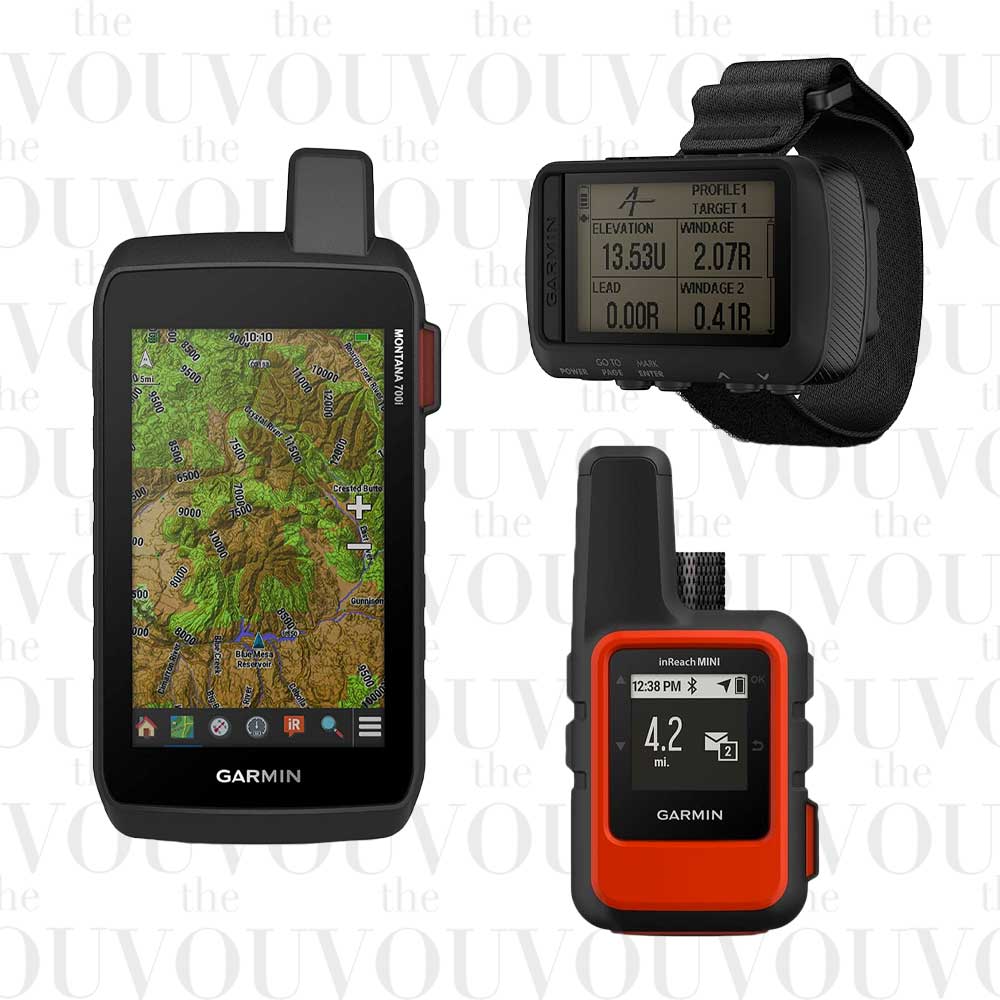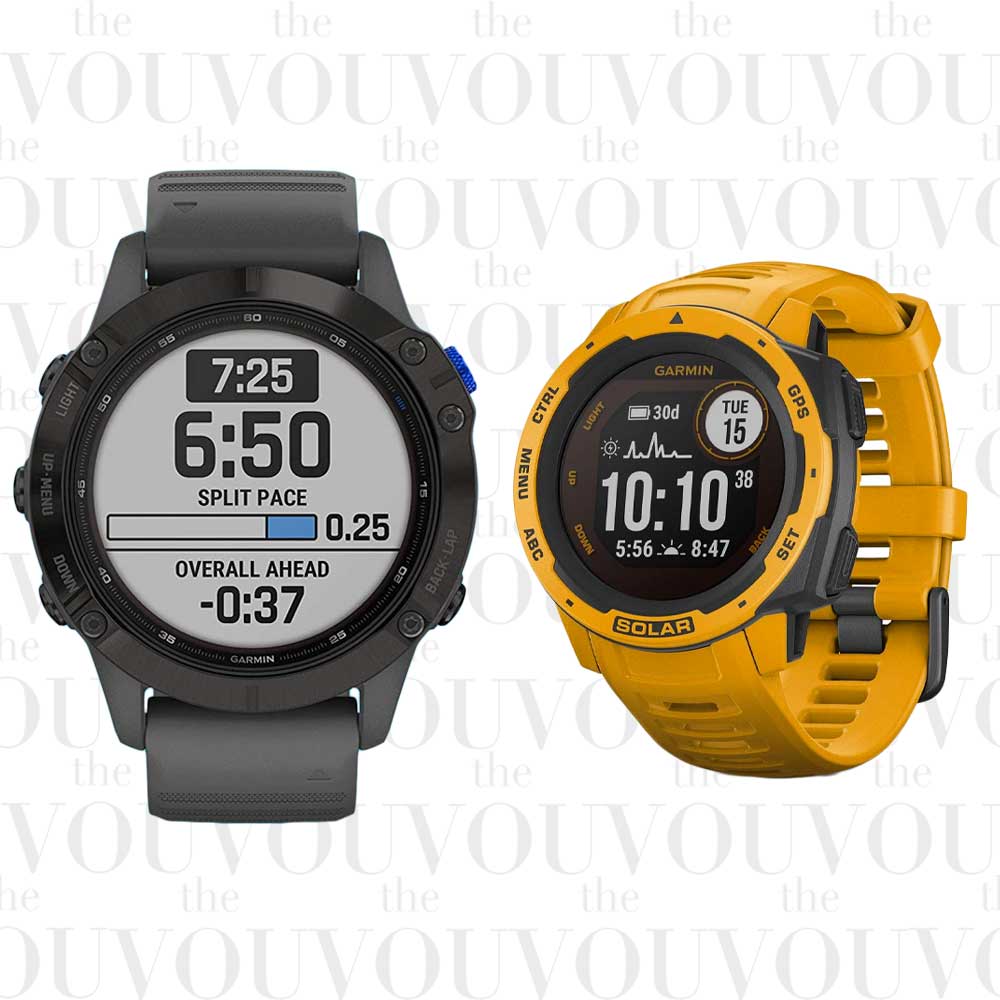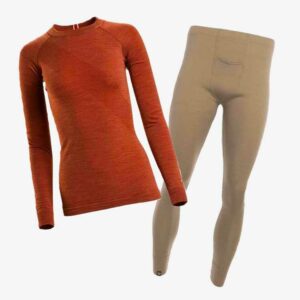
A bit unsure of what to wear hiking? Here are the best hiking clothes to choose from, so don’t be!
In this article, I’ll introduce you to the best hiking clothes to wear (and what NOT to wear hiking) in every season.
First, we look into DOs and DON’Ts when choosing the right hiking clothes based on the weather conditions, seasons, and temperature.
We’ll also look at must-have hiking clothes, including base layers, mid-layers, outer layers, and essential gear, such as backpacks, sunglasses, GPS trackers, and even smartwatches for hiking.
BEGINNER GUIDE
What To Wear Hiking
1. Hiking Base Layer
Good hiking undies, leggings, tops, shirts, long sleeves, bras, and socks should move sweat off the skin, dry fast, and are super comfortable next to the skin.
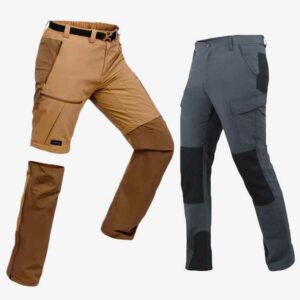 2. Hiking Pants
2. Hiking Pants
Durability and flexibility are critical; choose quick-drying and waterproof fabrics.
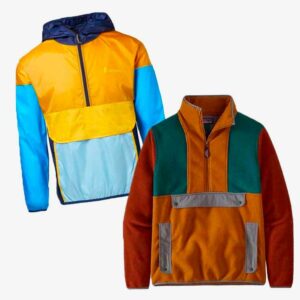 3. Hiking Jackets
3. Hiking Jackets
It must be waterproof and windproof but lightweight.
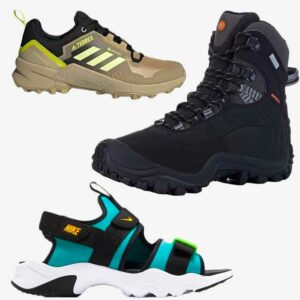 4. Hiking Shoes
4. Hiking Shoes
It must protect you from rocks, roots, and all sorts of natural hazards.
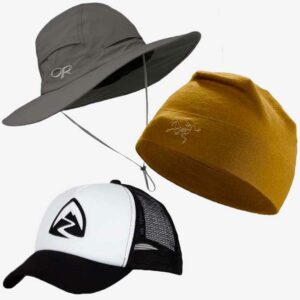 5. Hiking Hats
5. Hiking Hats
Essential to keep your head warm in the winter, the sun off your face and neck in the summer, and your head dry in the heaviest rain.
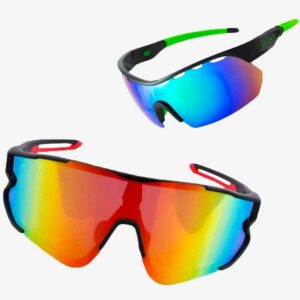 6. Hiking Sunglasses
6. Hiking Sunglasses
It must be high-quality polarized with UVA and UVB protection from specialized brands.
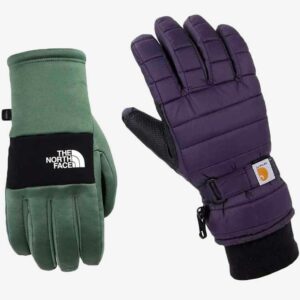 7. Hiking Gloves
7. Hiking Gloves
Having two pairs of hiking gloves (light and winter) is necessary to be prepared for any weather.
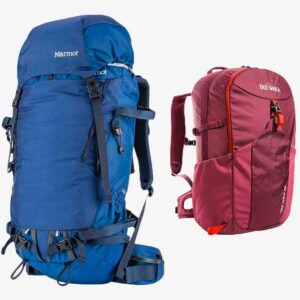 8. Hiking Backpacks
8. Hiking Backpacks
It must be waterproof, multifunctional, durable, and versatile.
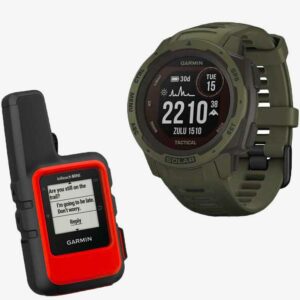 9. Hiking Gadgets
9. Hiking Gadgets
Smart accessories like GPS trackers and smartwatches will help you to navigate a hike easier and safer.
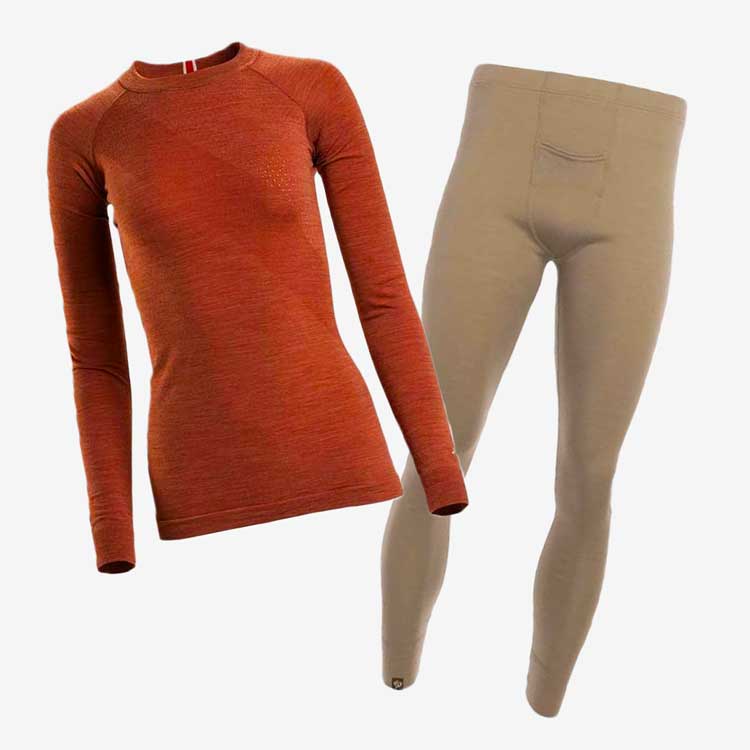
Hiking Base Layers
When choosing hiking base layers, the most suitable materials are Polyester, Nylon, and Merino Wool.
The materials’ moisture management ability allows the base layers to work well with your hiking clothes.
Good hiking base layers also regulate your body’s temperature, keeping you warm and cool as needed.
Good hiking base layers move sweat off the skin, dry fast, and are super comfortable next to the skin.
Tommy John Hiking Second Skin Brief
Best Hiking Undies
from $18
Hiking undies and leggings play a fundamental role in ensuring your overall comfort when climbing for long periods.
A must-avoid material is cotton – when it comes to hiking boxers, briefs, boy shorts, and bikini briefs, even if it is organic cotton underwear!
Wear hiking base layers made from polyester, nylon, and merino wool.
In my experience, EBY is a great online site for proper underwear, regardless of the occasion.
Icebreaker Merino Thermal Hiking Leggings
Best Hiking Leggings
from $85
Remember that these hiking clothes fall under the general category of outdoor garments.
With that in mind, you also need long underwear for hiking that must be packed according to the expected weather.
I always recommend wearing long underwear or hiking leggings under your hiking shorts.
These base hiking layers confer extra protection from the sun – on hot summer days – and deliver that extra warmth you need on cold winter days.
You can wear them under hiking pants or rain pants when weather conditions get stormy.
Patagonia Hiking Top
Best Hiking Top
from $25
Whether it is a cold winter hike, a spring hike, or a hot summer hike, the hiking top is a must-have base layer.
However, an ideal hiking top must be able to wick away sweat and keep you comfortable all day.
Merino wool and synthetic materials are the best choices in this case.
Wicking tank tops and short-sleeve T-shirts are fine in warm weather.
But, if you’re hiking on a sun-drenched day, wear a long-sleeve UPF-rated shirt or hiking top with a flip-up collar for neck protection.
Columbia Hiking T-Shirt
Best Hiking Shirts & Long-Sleeves
from $10
Hiking shirts and long sleeves are versatile base layers, ideal for days with fast-changing weather.
Important here is to pay attention to the material type to ensure an optimal level of comfort on your backpacking trip.
If it helps, see your long-sleeve shirt as an extra layer that creates warmth on cool days and as an alternative to a T-shirt to prevent sunburns on sunny days.
Icebreaker Women’s Merino Sprite Racerback Bra
Best Hiking Sports Bra
from $30
Similar to the base underwear layer, you must only wear hiking bras made from sweat-free materials.
Also, choose your hiking bras according to the activity intensity and the required level of support.
Ideal hiking bras have a four-way stretch fabric base blended with moisture-wicking materials that work wonders in hot or colder weather.
Darn Tough Hiking Socks
Best Hiking Socks
from $15
When it comes to hiking, stay away from cotton socks.
Since cotton absorbs sweat, your feet will stay wet for the whole hike, leading to painful blisters.
Merino wool socks – taller than your hiking footwear – are ideal for anyone; trail runners, people enjoying backcountry storms, or heavy rain walks.
Also, always have a spare pair of hiking socks just in case you wade too deeply in a creek or your feet start to blister.
Generally, having a thicker pair and one thinner will cover you for all types of weather.
Hiking Pants
Cargo Pants, Rain pants, & Hiking Shorts
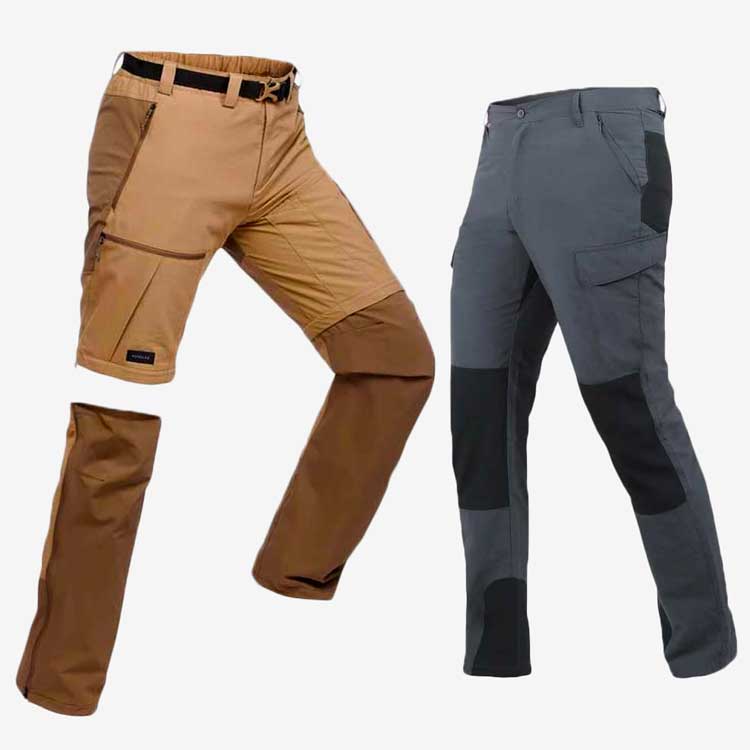
When it comes to hiking pants, durability and flexibility are critical.
Trails have twists, turns, and unexpected terrain conditions, so you must move freely and safely.
Imagine hiking in stretchy tights or yoga pants; branches and boulders will shred them to pieces.
Your hiking pants must be durable but comfortable enough to let you climb and move easily.
Natural hazards such as ticks, poison ivy, and sharp rocks also play a significant role in deciding the ideal length and thickness of hiking bottoms.
Quick-drying and waterproof fabrics are also important here.
Eddie Bauer Hiking Cargo Pants
Best Hiking Cargo Pants
from $12
Cargo pants are a popular choice among hikers.
That’s thanks to the sturdy but functional construct that allows safe hiking while carrying a lot of things.
Amazon Hiking Rain Pants
Best Hiking Rain Pants
from $17
Hiking rain pants have a similar construct (and look) to cargo hiking pants.
However, hiking rain trousers are made of waterproof materials that make them ideal for rainy hiking days.
Amazon Convertible Hiking Pants
Best Convertible Hiking Pants
from $19
Most hikers I know have at least a pair of zip-off pants for hiking, from ‘fabric for comfort.’
That’s because you can adjust them on the go, in seconds, according to the weather.
It saves time, money, and space, as you no longer have to stuff your bag with hiking pants and shorts.
Mountain Hardwear Fleece Pants
Best Hiking Fleece Pants
from $150
Another must-have for hiking is fleece pants, as a severe cold is always possible.
With an insulating layer, fleece pants are an excellent choice for cooler hikes.
Also, the warmer layer or mid-layer addition helps with cold temperatures on extended hikes and rainy conditions.
Eddie Bauer Hiking Shorts
Best Hiking Shorts
from $28
Even the most straightforward hiking gear guides advise packing a pair of hiking shorts.
That’s because hiking shorts have an exceptional combination of comfort and versatility.
Lightweight, breathable, and quick-drying, hiking shorts are an excellent choice for hiking on nice weather days.
Moreover, shorts made of stretch-woven fabric with an external stash pocket and pocket zips are great for hiking.
Hiking Jackets
Hiking Raincoats, Insulated Jackets, Fleece Jackets, & Vests

Designed to provide further insulation for warmth, the best hiking jacket depends on the season and the weather you’re hiking in.
Ideally, you’ll have a waterproof and windproof but lightweight and easy-to-pack jacket – in case you need to remove it along the way.
This way, you’re covered for any weather conditions and temperature changes during your hike.
Polyester fill or water-resistant down-inside jackets are also a great choice, regardless of weather conditions.
Since jackets are the most important components of hiking clothes, ensure you get them from the top outdoor clothing brands.
L.L.Bean Hiking Rain Trail Jackets
Best Hiking Rain Jackets
from $60
The best rain jacket must have a waterproof outer layer and be breathable at the same time.
Breathable fabrics – from synthetic or recycled fabrics – are a must.
The jacket must be able to block rain and keep you dry without feeling like you’re wearing a plastic bag.
Best hiking jackets have a cover, secure-zip hand pockets, a large pocket for storage, and an additional secure-zip pocket; ideally, all of it packs into a chest pocket.
Columbia Insulated Jackets
Best Insulated Hiking Jackets
from $80
From all the clothing items here, a well-insulated hiking jacket with an adjustable hood is critical if you want to avoid hypothermia.
That’s why many pro hikers bring two jackets: a lightweight fleece as a top jacket and a lightweight puffy jacket that fits in a daypack.
Regardless of your choice, make sure your hiking jacket is insulated, from windproof fabric, and suitable for harsh weather conditions.
Berghaus Hiking Fleece Jackets
Best Hiking Fleece Jackets
from $60
Great for colder days, hiking fleeces come in lightweight, midweight and heavyweight.
Choose quick-drying materials and stretch fleece with a pocket on the liner.
Make sure you choose the weight based on the forecasted weather and if your metabolism runs hot or cold.
Patagonia Hiking Vests
Best Hiking Vest
from $60
If you’re going to hike in mild weather conditions, a fleece jacket is sufficient.
However, if the weather might get cold fast, you better have a puffy vest with you as well.
There are two main types of hiking vests.
- Puffy vests lose their warmth-retaining abilities if you get them wet, so they are not that suitable for wet conditions.
- Hiking vests with synthetic insulations are a far better bet, if the weather is cold, you put it on, and if you’re in hot weather, you take it off.
Hiking Footwear
Hiking Shoes, Boots, & Sandals

Shoes are one of the most important parts of a complete (and safe) hiking outfit.
The hiking footwear you choose should be able to protect you from rocks, roots, and all sorts of natural hazards.
Modern hiking shoes have Surface Control™ technology that combines rubber outsole with geometry midsole.
Also, the best hiking shoes are built to confer extra ankle support and enhanced traction on wet and dry surfaces.
However, choosing the best hiking shoes for you depends on three main factors:
1. Weather Conditions – Hiking in snow or rainy weather requires waterproof footwear. Similarly, it would be best to have dedicated hiking sneakers or sandals on hot summer days.
2. Type of Terrain – If you are hiking on a flat track, a pair of comfortable sneakers may be all you need. However, once you build elevation and the terrain turns rocky, a sturdy pair of hiking boots with ankle protection is a much better choice.
3. Personal Preference – I wear clunky hiking boots most of the year, and that’s because I appreciate the ankle support and extra traction provided. However, I have friends who wear hiking sandals all year long, up to the point snow makes them impractical.
Salomon Low Gore-Tex Hiking Shoes
Best Hiking Shoes
from $65
Always have a reliable pair of hiking shoes in your bag, regardless of your preferences.
Sturdy on the surface and with robust soles, these shoes will protect your feet and ankle during unexpected portions of difficult terrain.
As a side note, ensure the hiking shoes you buy will keep your feet safe and very comfortable.
Timberland Hiking Boots
Best Hiking Boots
from $80
Wearing the right pair of hiking boots will make a big difference to the success of your trip and the health of your feet at the end of the day.
A good pair of hikers will stand up to the rugged terrain, soaking up the lumps and bumps of the roughest trails and keeping your feet dry in the wettest and muddiest bogs.
The most important factor is fit, so it’s best to try to ensure you have chosen a comfortable and breathable hiking boot before buying.
Get it wrong, and you’ll suffer from blister-inducing sore spots; on the other hand, choose wisely, and your boots will feel as comfy as your favorite trainers.
Keen Hiking Sandals
Best Hiking Sandals
from $30
There was a time when sandals were reserved for the beach or the public shower.
Nowadays, outdoor apparel companies have taken the core DNA of the standard flip-flops and leveled it up.
The best hiking sandals you can buy right now are packed with features like a beefier sole, secure webbing, and greater arch support.
Montane Hiking Shoe Gaiters
Best Hiking Shoe Gaiters
from $25
On the trail, you might see legwarmers atop hikers’ boots.
These accessories, called ‘hiking gaiters,’ keep trail debris, rain, and even pests like ticks from invading your boots.
Best Hiking Headwear
Hiking Hats for Sun, Rain, & Cold Weather
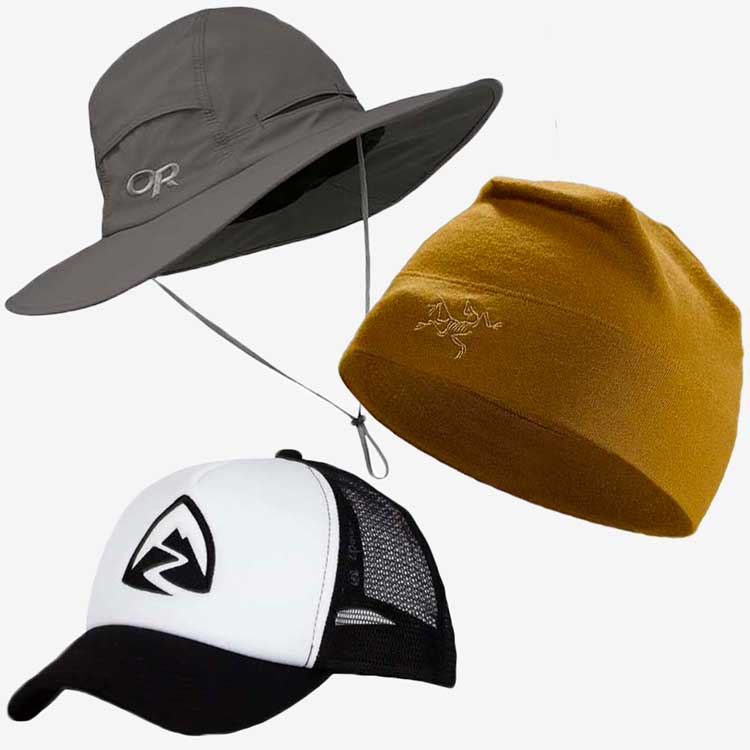
Hiking hats are as essential as your hiking shoes, and here’s why:
A good hiking hat will keep your head warm in the winter, the sun off your face and neck in the summer, and your head dry in the heaviest rain.
There’s a hat for every season and weather condition, as you’ll see below.
Columbia Hiking Boonie Hats
Best Hiking Sun Hats
from $34.99
Wearing a Boonie hat is a must if you’re hiking in the desert or other relentlessly sunbaked environments.
Fjallraven Hiking Caps
Best Hiking Caps
from $35
Hiking caps are also great for keeping the sun away from your eyes.
Moreover, the open back allows for further ventilation if needed.
Outdoor Research Hiking Brimmed Hats
Best Hiking Rain Hats
from $30
Waterproof hats with wide brims are ideal for keeping the rain out of your eyes.
Oakley Hiking Beanie
Best Hiking Winter Hats
from $20
If you’re hiking in cold weather conditions, you MUST pack a hat made of wool or synthetic material to insulate your head.
Icebreaker Unisex Merino Chute Neck Gaiters
Best Hiking Neck Gaiters
from $30
Experienced hikers also use neck gaiter, in particular in freezing weather.
Check out this article for the best neck gaiters you can buy right now.
Sunglasses for Hiking
Polarized Hiking Sunglasses
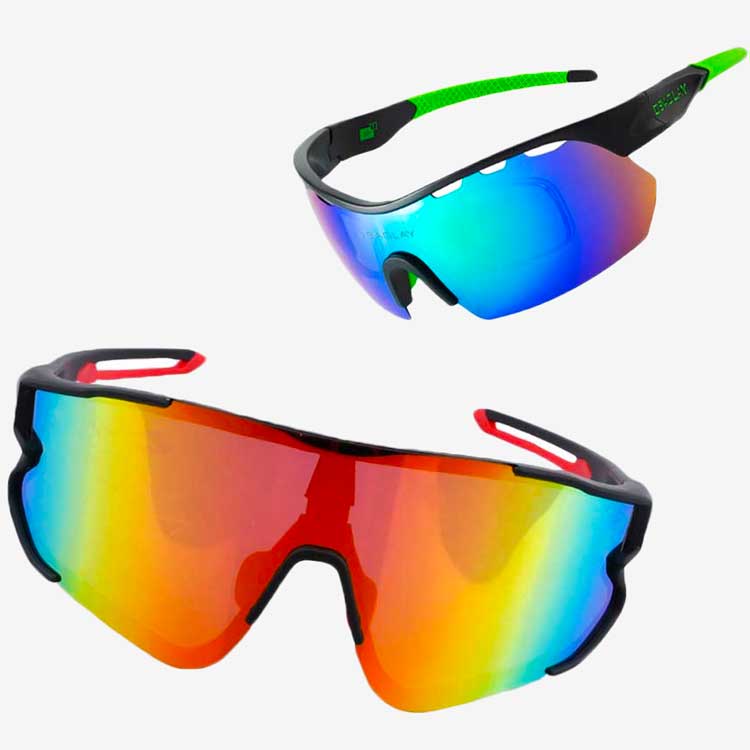
Few mention sunglasses when discussing packing essentials for a long summer hiking day.
However, the sun’s glare could damage your eyes if you’re hiking without sunglasses.
Oakley Sports Performance Sunglasses
Best Hiking Sunglasses
from $173
Most hiking sunglasses you can buy from high street retailers won’t protect your eyes from the sun unless you add special filters.
Therefore, always wear specialized, high-quality polarized hiking sunglasses with UVA and UVB protection.
Gloves for Hiking
Light, Insulated, & Waterproof Hiking Gloves
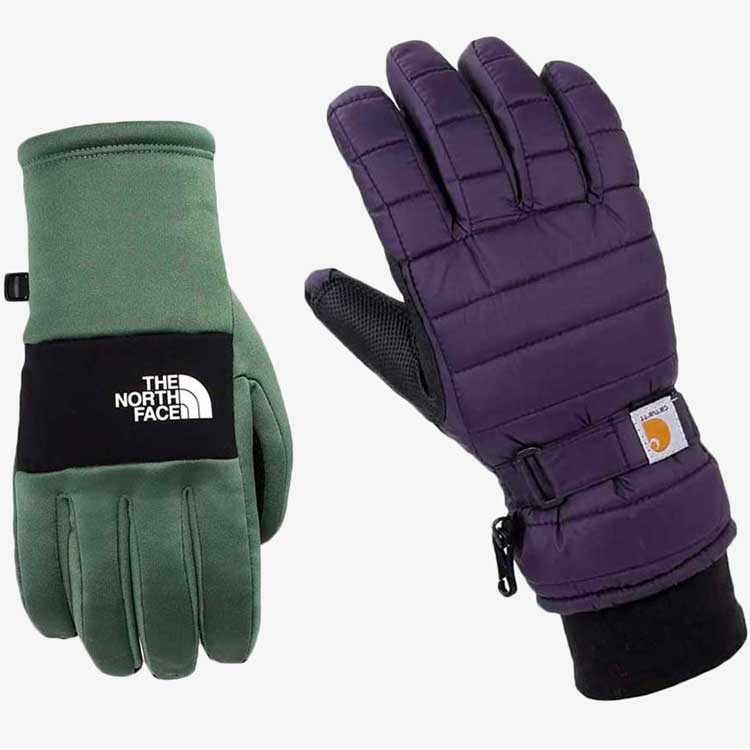
Insulated and waterproof gloves are best for wintry conditions.
There are light and winter hiking gloves to choose from.
However, some of the best gloves for hiking are heated – see this article for an excellent selection of heated gloves right now.
Gloves for Hiking
Light, Insulated, & Waterproof Hiking Gloves

Insulated and waterproof gloves are best for wintry conditions.
There are light and winter hiking gloves to choose from.
However, some of the best gloves for hiking are heated – see this article for an excellent selection of heated gloves right now.
The North Face Hiking Etip Gloves
Best Light Hiking Gloves
from $40
When the wind takes the chill factor into the negatives, freezing temperatures often descend in the mountains.
Having a light pair of hiking gloves in your bag – just in case – will protect your fingers from a potential onslaught.
Eddie Bauer Insulated Hiking Gloves
Best Winter Hiking Gloves
from $25
If you’re hiking snowy mountains, you need a pair of insulating gloves, knitted mitts, or even better, thermal gloves.
Hiking Packs
Hiking Backpacks, Waist packs, Hydration packs & Child Carriers
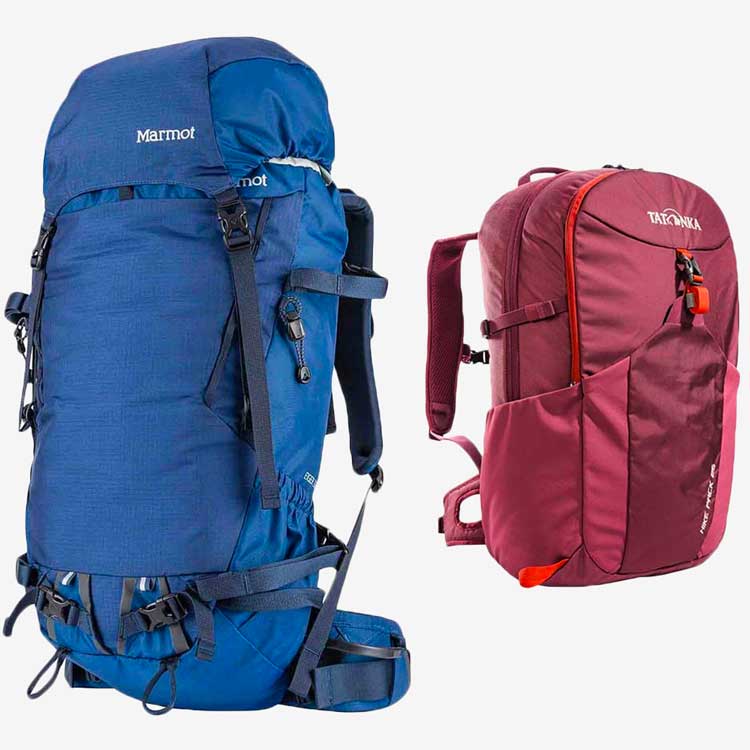
Coming in various sizes, types, materials, and colors, hiking bags are a must.
Yet, avoid the temptation of taking an oversized backpack while hiking, and pack only the things you need.
Be super selective with everything you put in the pack so you can keep to a smaller bag, around 25L or so.
Best hiking backpacks are waterproof and very durable.
Also, a good hiking pack should help with your posture, like the bags below.
Mountain Hardwear Hiking Backpacks
Best Hiking Backpacks
from $60
Some of the best hiking backpacks are very versatile.
These bags can be used anywhere, from superlight backcountry trips to rock climbing, had heavy hiking.
As a note, if your backpack is over 25L, make sure it allows uniform packing for increased stability.
Filson Waist Pack
Best Hiking Backpacks
from $75
Even if you’re going for a shorter hike with stable weather, you’ll still want a hiking waist pack.
Rather than carrying water bottles and accessories, a hiking waist pack is great at holding your stuff and setting your hands free.
Camelbak Hydration Pack
Best Hiking Hydration Packs
from $50
It is hard to have enough water to drink when you’re hiking or climbing.
But any outdoor enthusiast knows how important it is to stay hydrated.
And while there’s no one size fits all hydration pack, that diversity alone is great as you can choose your hiking hydration pack according to your desired activities.
Deuter Child Carriers For Hiking
Best Hiking Child Carriers
from $32
Back carriers are suitable for babies who can sit up and support themselves.
Generally, you’ll see them labeled as being okay for use from 6 months up.
Also, a good hiking child carrier should last until your child’s 4 or 5 – if your back can withstand it!
Hiking Gadgets
Hiking GPS Trackers & Smartwatches
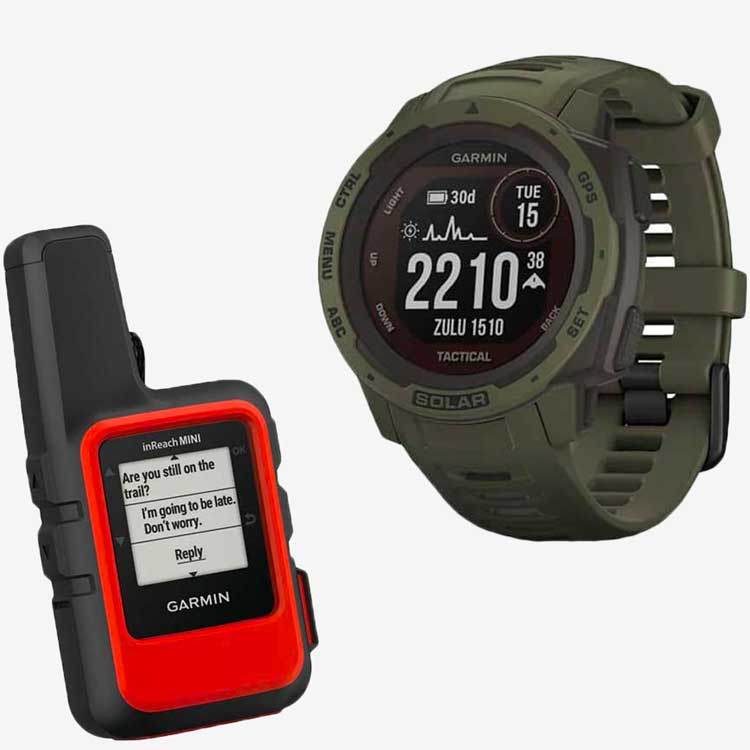
Modern hiking requires a lot of smart accessories like GPS trackers and smartwatches.
But know you’re going to get your hiking accessories scratched (and wet) a lot.
Thus, make sure you also include the following thoughts when choosing a hiking smartwatch or GPS tracker:
- Is it waterproof?
- How long does the battery last?
- How durable is it?
- Is it affordable?
Garmin Hiking Handhelds GPS Trackers
Best GPS Trackers For Hiking
from $290
If you’re serious about hiking, you need a dedicated GPS tracker.
A stand-alone hiking GPS can help you with navigation, planning, and weather prediction.
Garmin Outdoor Smartwatches
Best Smartwatches For Hiking
from $349
A good hiking watch does not only show time and date.
It provides crucial information for your outdoor adventures, such as altitude, location, air pressure, sunrise/sunset times, etc.
Watches, particularly smartwatches with hiking-specific features, are very popular these days.
The companies behind them are making great progress regarding fitness tracking and combining design with useful technology.
How To Choose The Right Hiking Clothes?
When it comes to hiking, each clothing layer has a unique function.
Ideally, you add or subtract clothing layers to adapt to the changing weather conditions.
above was an easy-to-use point checklist comprising the best hiking clothes (from ideal materials) and brief explanations on why you must have them.
Now, we’ll look at how to choose the right hiking clothes based on weather conditions and AM – PM suitability, given the temperature changes.
There are also some key precautions you must take on a hiking day, and in this article, I will detail the dos and don’ts for your hiking attire.
1. Hiking Clothes Come in Layers
In hiking, clothes and gear come in layers.
Each clothing layer fulfills a particular function, and the aim is to add or subtract clothing layers to match the weather conditions.
2. Hiking Clothes Should be Cost-effective, Durable, and Comfortable
Buying hiking clothes could be an expensive exercise.
For that, try to match your stylistic preferences with your budget before you shop.
Also, ultralight hiking gear is a great choice, but it will lighten your wallet.
so, purchasing and wearing the last season’s discounted hiking clothes, from the winter base layers to repurposed, upcycled, or clearance hiking apparel, will do just fine
However, regardless of your hiking clothing choice (brand, color, style) never compromise on comfort!
3. Consider the Weather Condition
In hiking, your health and safety depend on your hiking plan, what you wear, and what you have packed.
Always choose hiking clothes depending on the weather conditions to avoid any unwanted surprises.
Moreover, as forecasts can be off, make sure you also pack hiking clothes for unexpected weather conditions, be it colder, wetter, snowier, or hotter than predicted.
In my experience, there’s no climbing day without at least a bit of bad weather.
Thus, I always have with me an extra set of hiking clothes and a fully charged smartphone just in case I get stuck somewhere.
4. The Material Choice is Important
Most adventure sports have certain materials you should avoid at all costs.
Equally, there are materials you should and should not wear hiking.
Merino Wool – Soft, breathable, and moisture-wicking merino wool is a material that dries quite fast.
Polyester/Nylon – More affordable versions of merino wool but with similar properties.
Fleece – Polyester fleece jackets have a soft feel thanks to thick fibers that generate warmth and have water-repellent properties.
Silk – With poor wicking ability, silk is not ideal for a strenuous hike.
Cotton – Cotton is inefficient at wicking and drying but excels at soaking up sweat and staying wet.
5. Function Over Fashion, ALWAYS
Research shows that wearing fashionable clothes while doing sports boosts one’s confidence; the same applies to hiking.
However, in the case of hiking, looking good while feeling miserable – because you’ve twisted an ankle or your clothes are soaked – is not something you want.
When it comes to hiking clothes, the functionality, safety, and comfort of your garments and accessories must ALWAYS come first.
If you find hiking apparel that matches your fashion taste and budget after ensuring safety, functionality, and comfort, go for it.
Conclusion
Now you’ve got the basics of hiking clothes, what to wear hiking and what to avoid, what to do to ensure a good hiking day and must-have hiking clothes for an ideal hiking outfit.
A non-debatable for any solid hiking outfit is using layers at all times.
Regardless of the weather conditions, be that a summer hike or a winter hiking session, hiking layers are a must.
There is layer after layer of clothing (for any quality hiking gear or hiking apparel), so get used to the idea of having extra clothing layers on you.
Finally, don’t forget to avoid cotton-based jeans for hiking or any apparel not suitable for rain or unable to provide sun protection.
Materials-wise, you should choose Merino wool and synthetics, even recycled materials, over cotton.
Weekly Newsletter
Keep up with the latest in fashion, beauty and style!
You have Successfully Subscribed!
Now it’s your turn…
What do you recommend wearing on a hike?
In your opinion, what is the best hiking outfit?
Recommend three hiking outfits/brands you think I should promote in this article.
Do you have any hiking clothing tips you would like me to add?
Please leave your comments below.
Born and raised in Golden, Colorado, Emma has spent her adult years traveling and living around the American West and Alaska. Emma has worked as a camp counselor, raft guide, and even avalanche educator, holding a master’s degree in Outdoor and Environmental education. More recently a hiking guidebook author, nowadays Emma writes and edits for a variety of outdoor and adventure publications.

